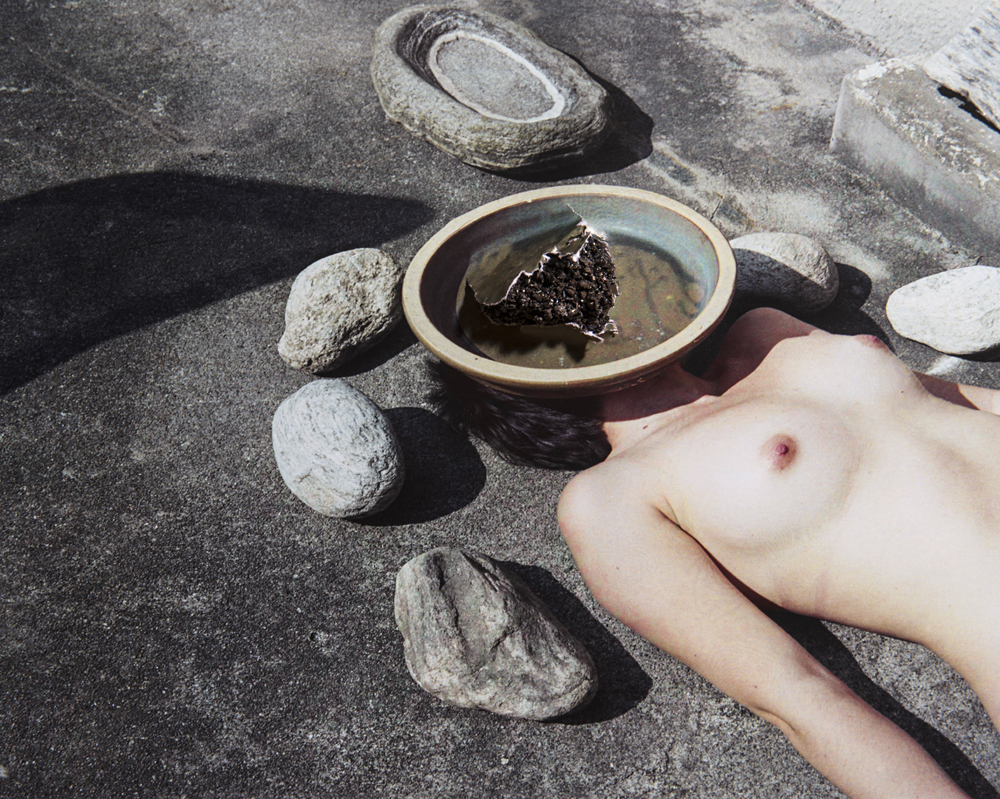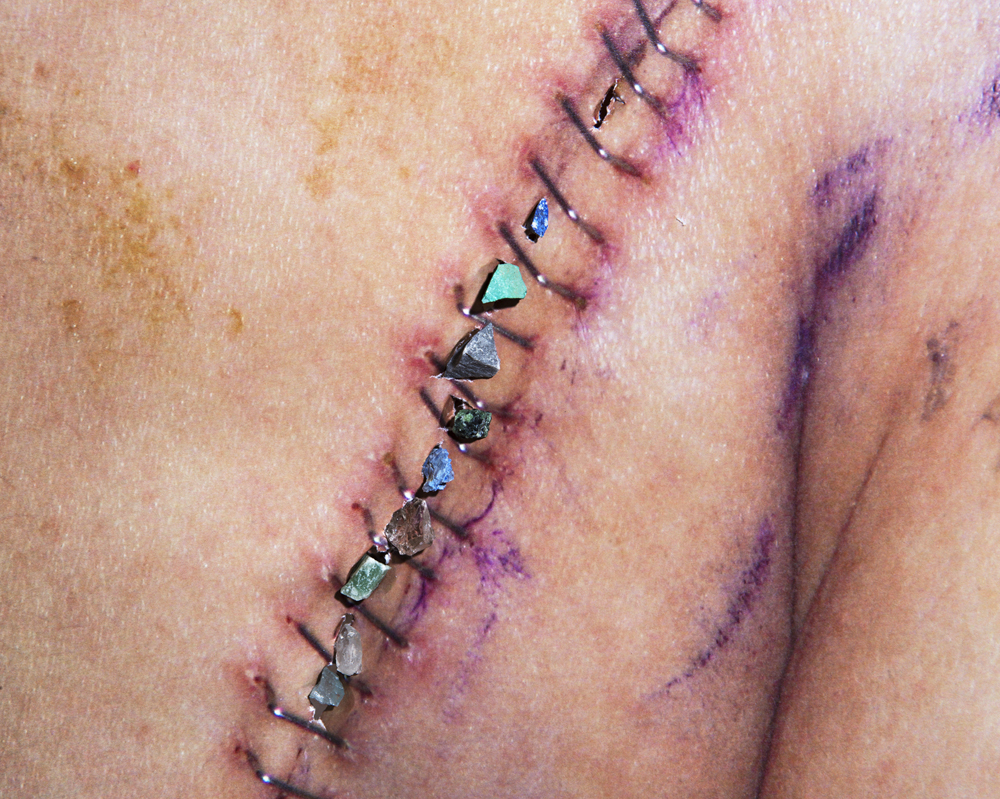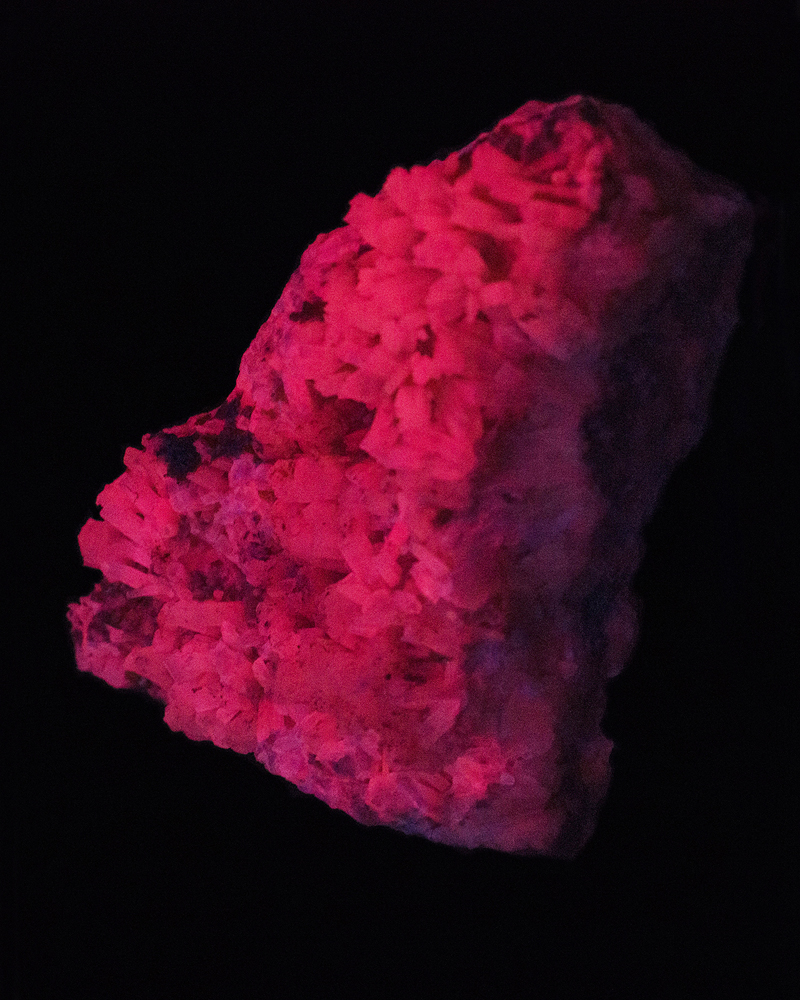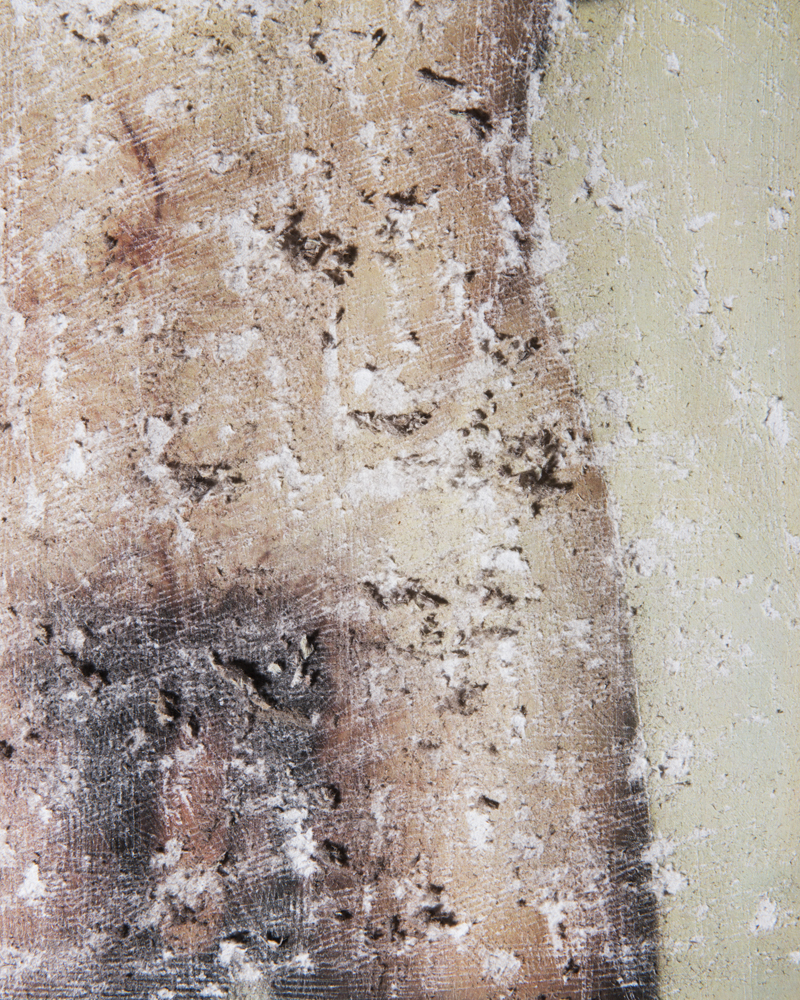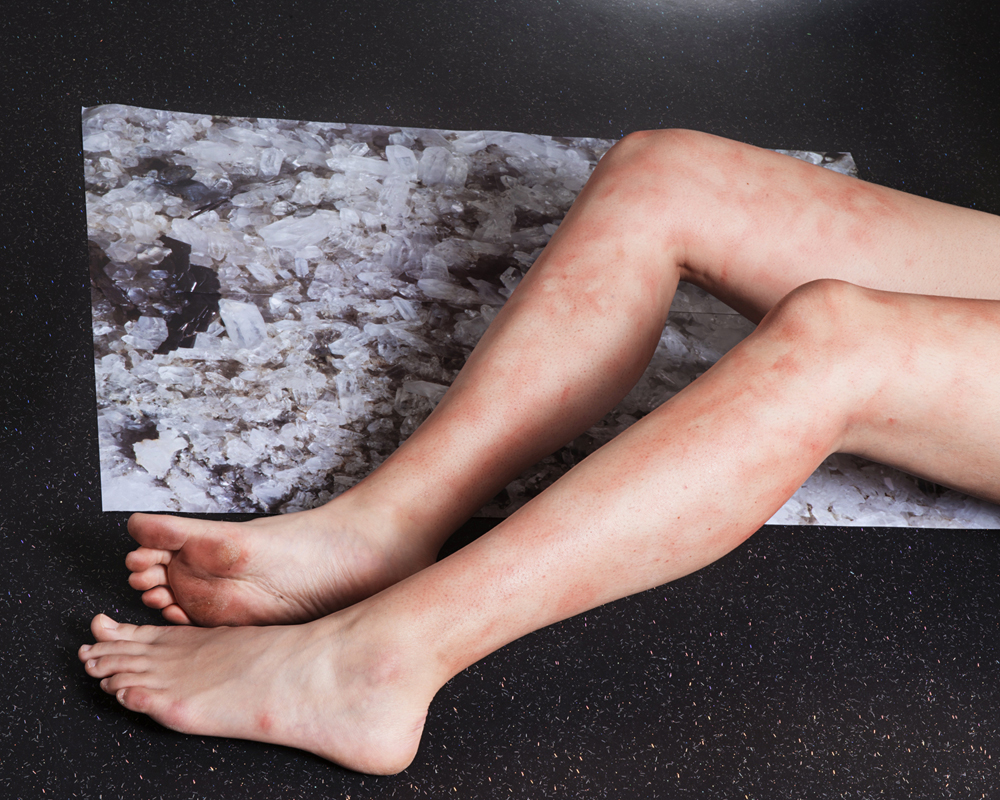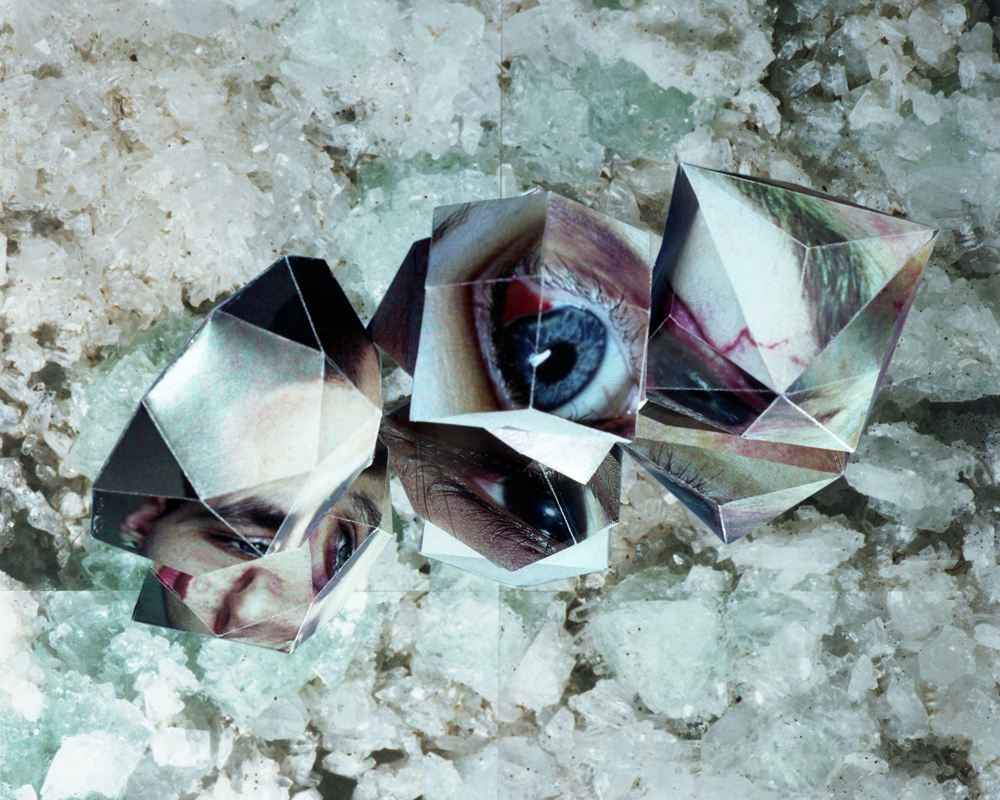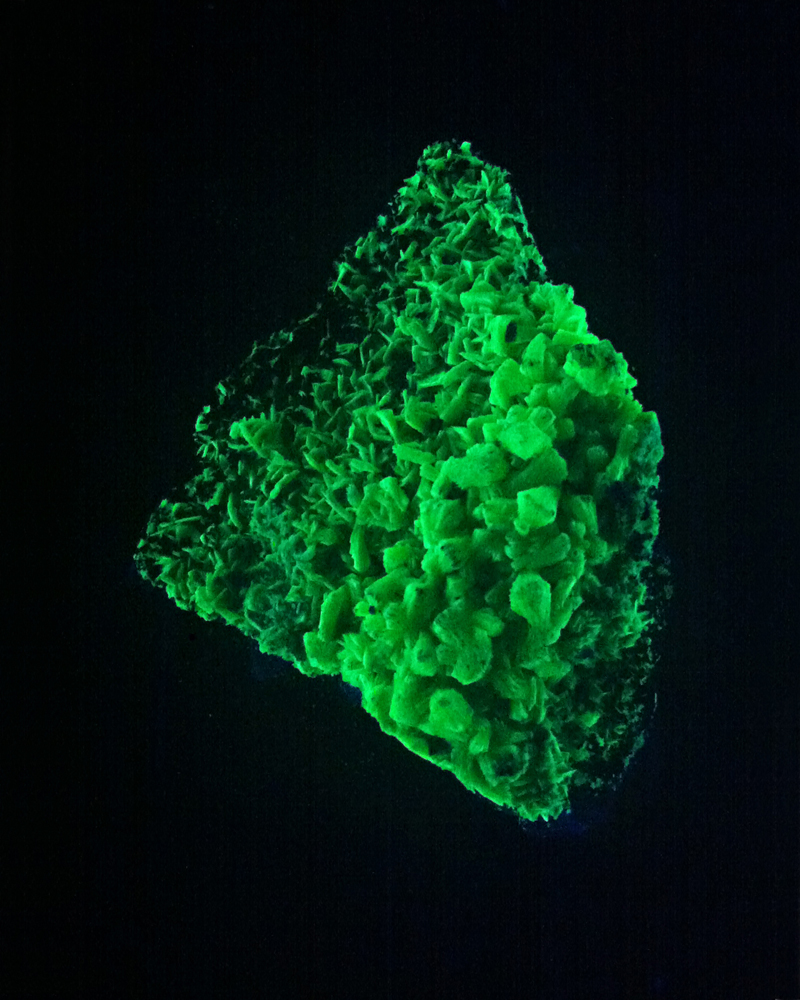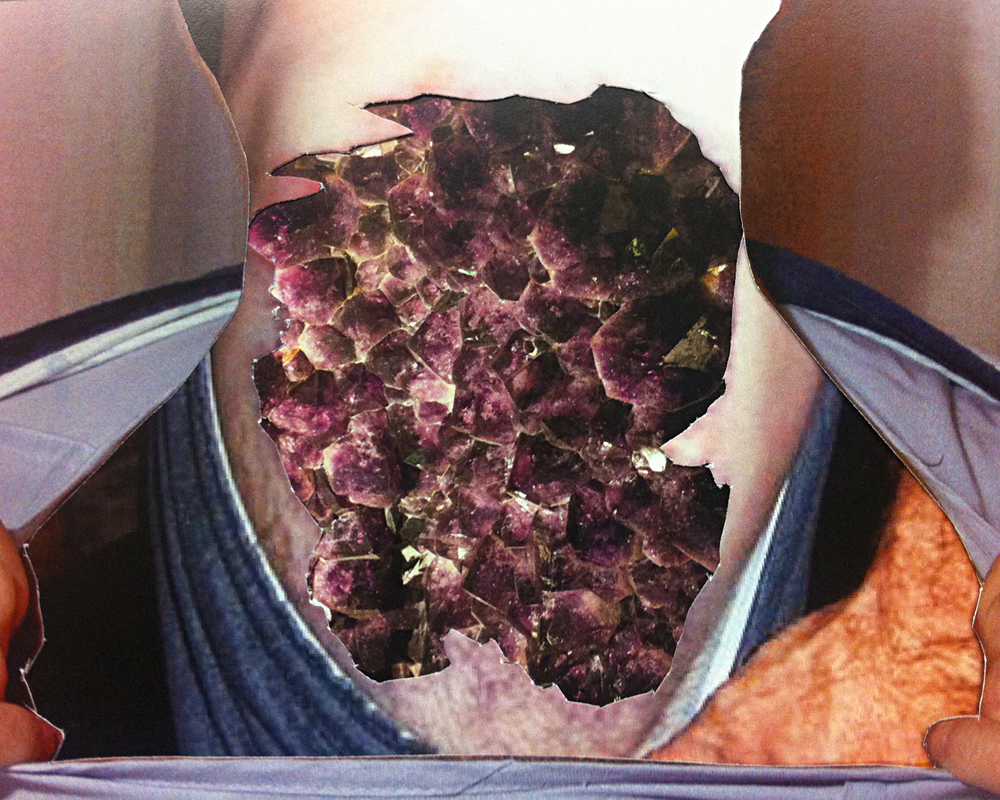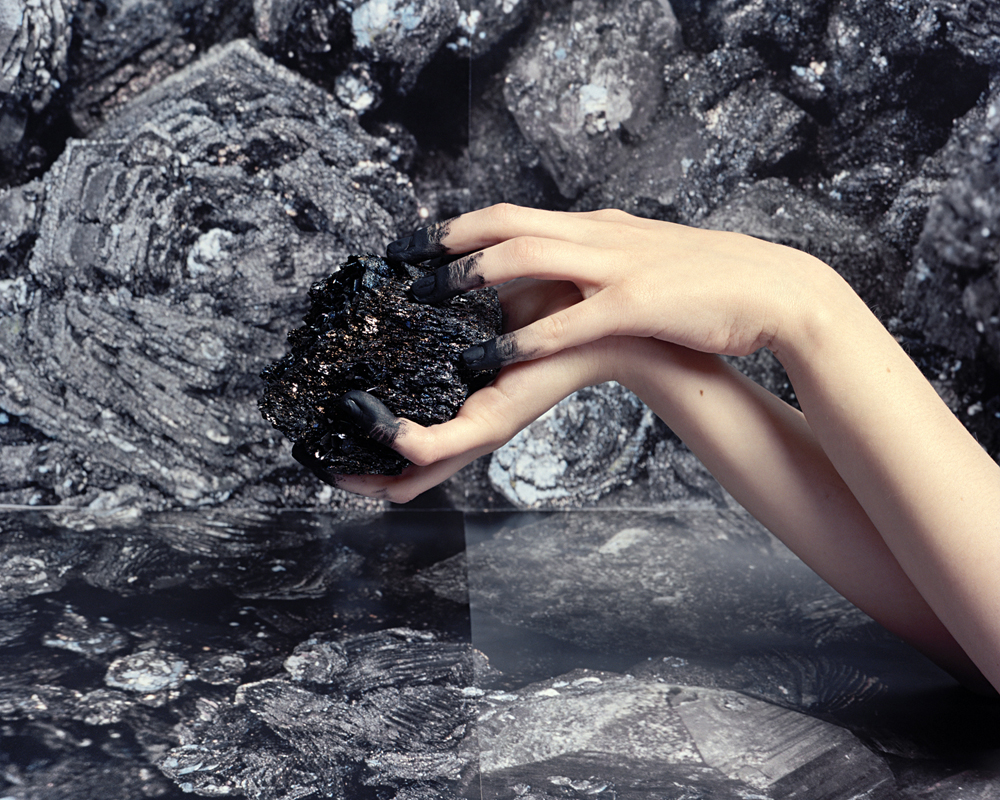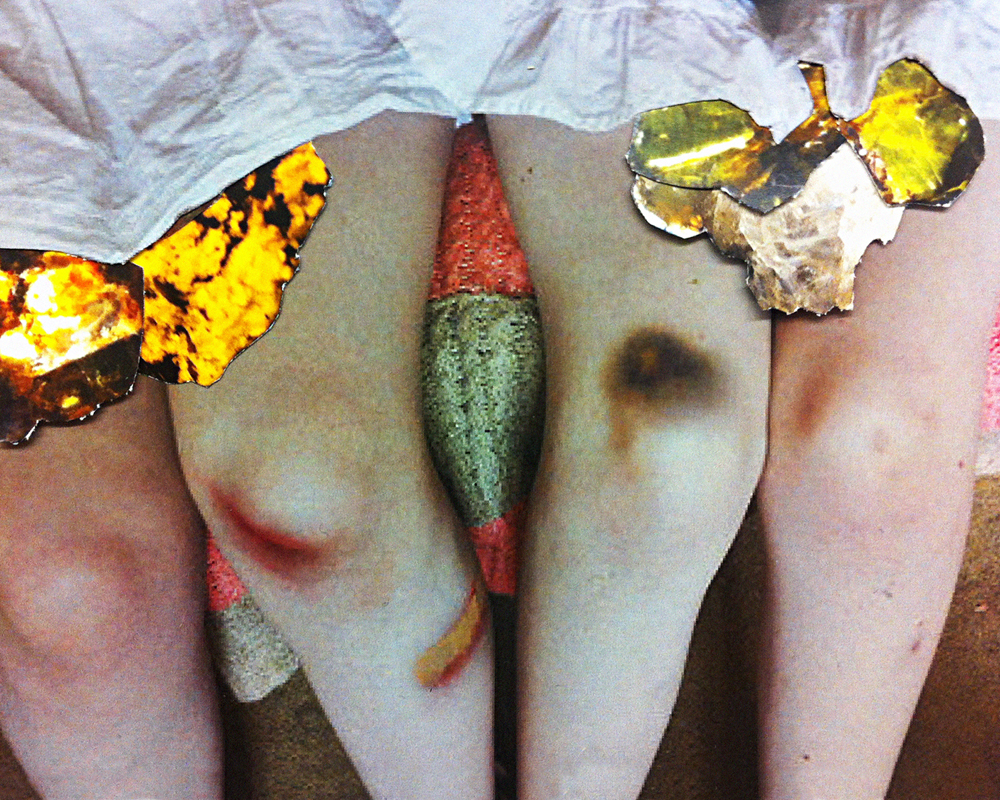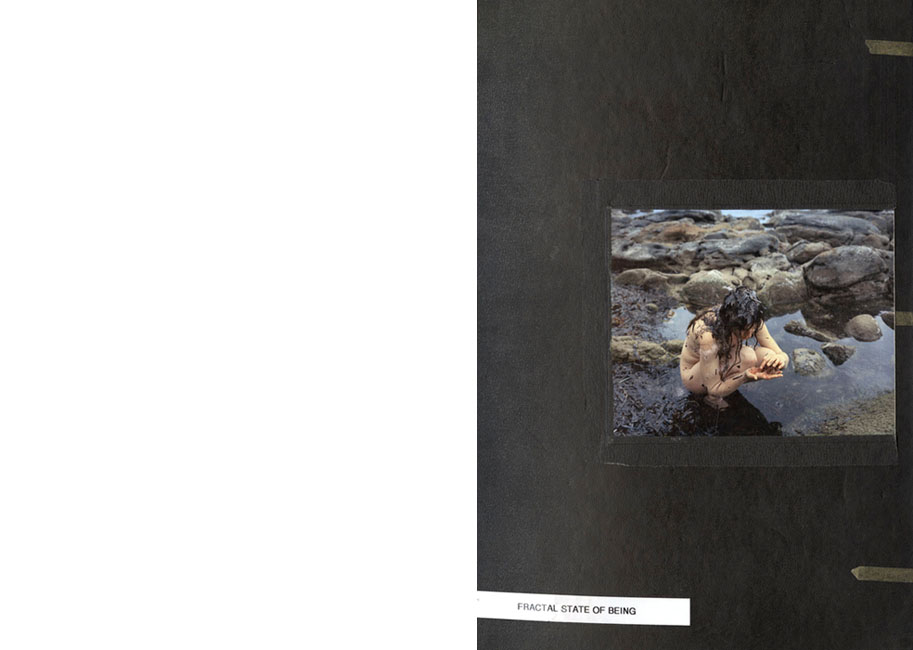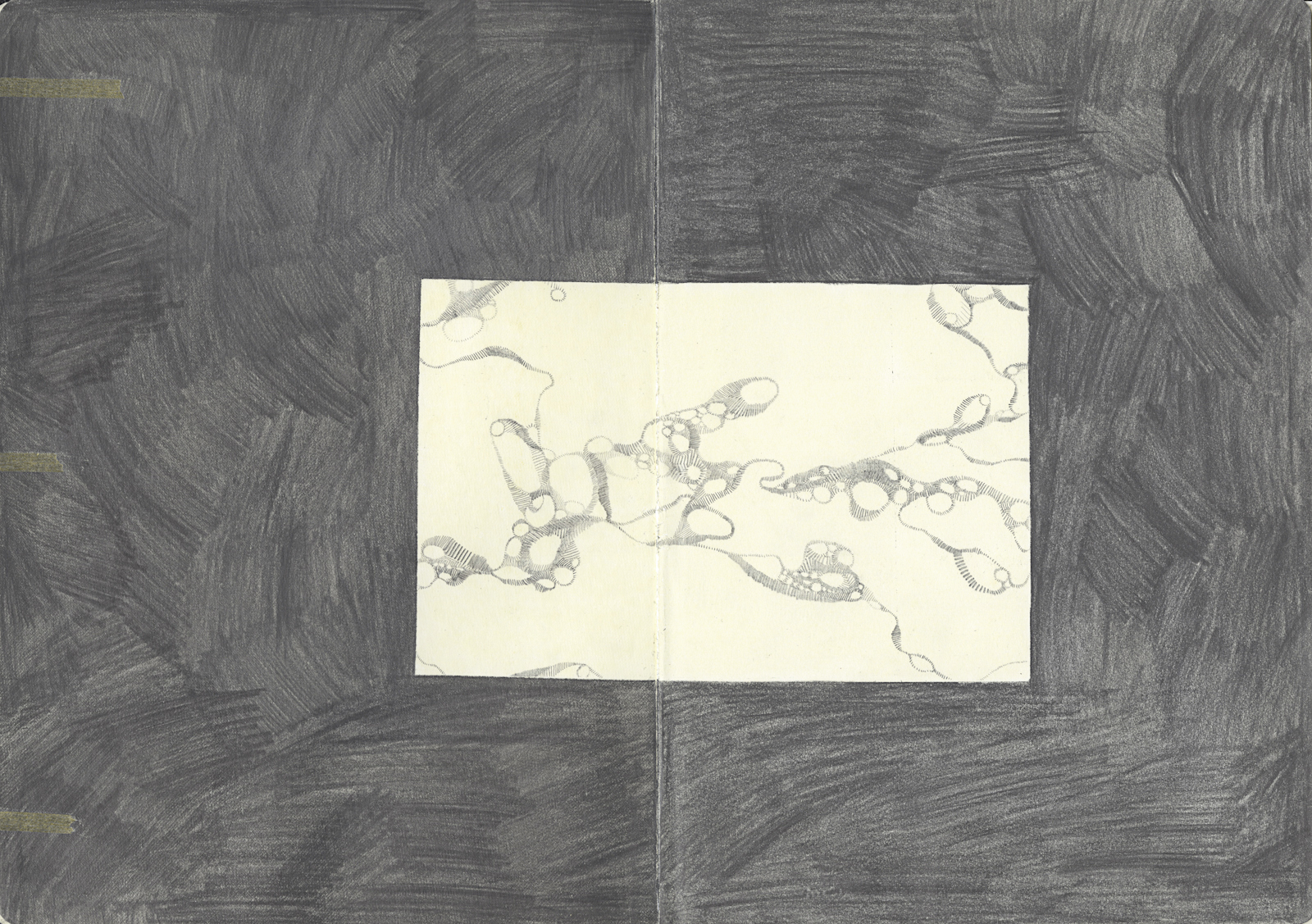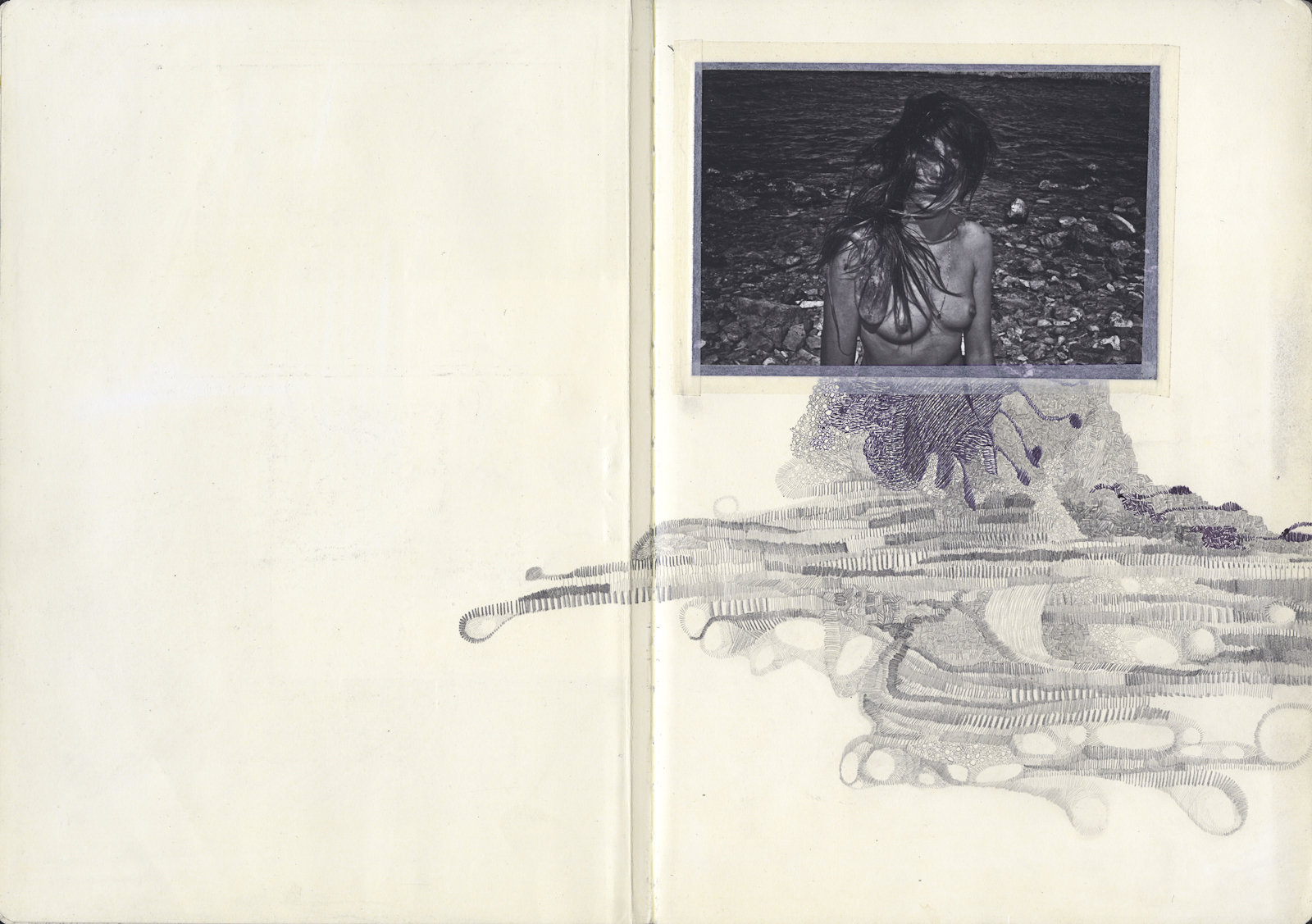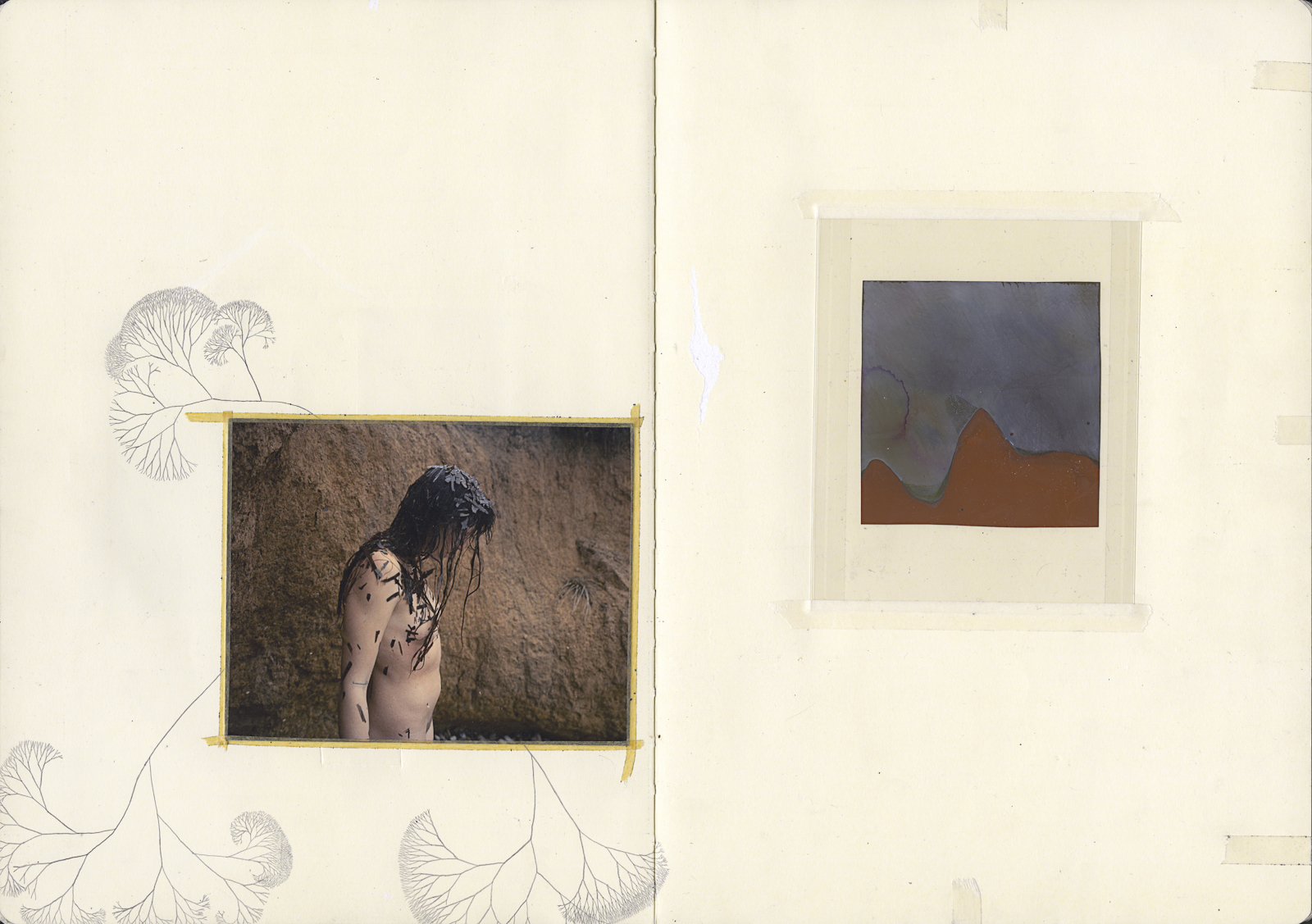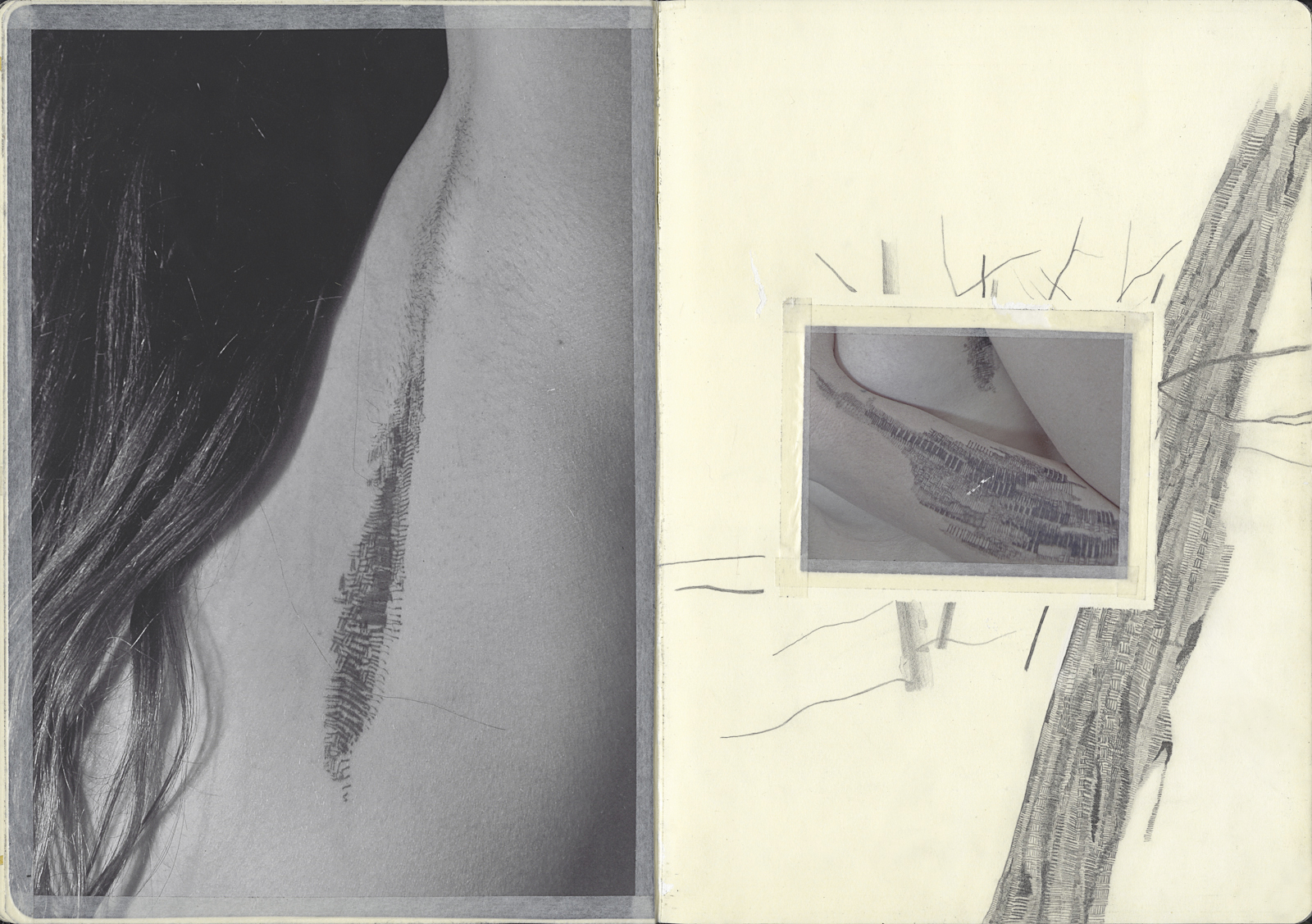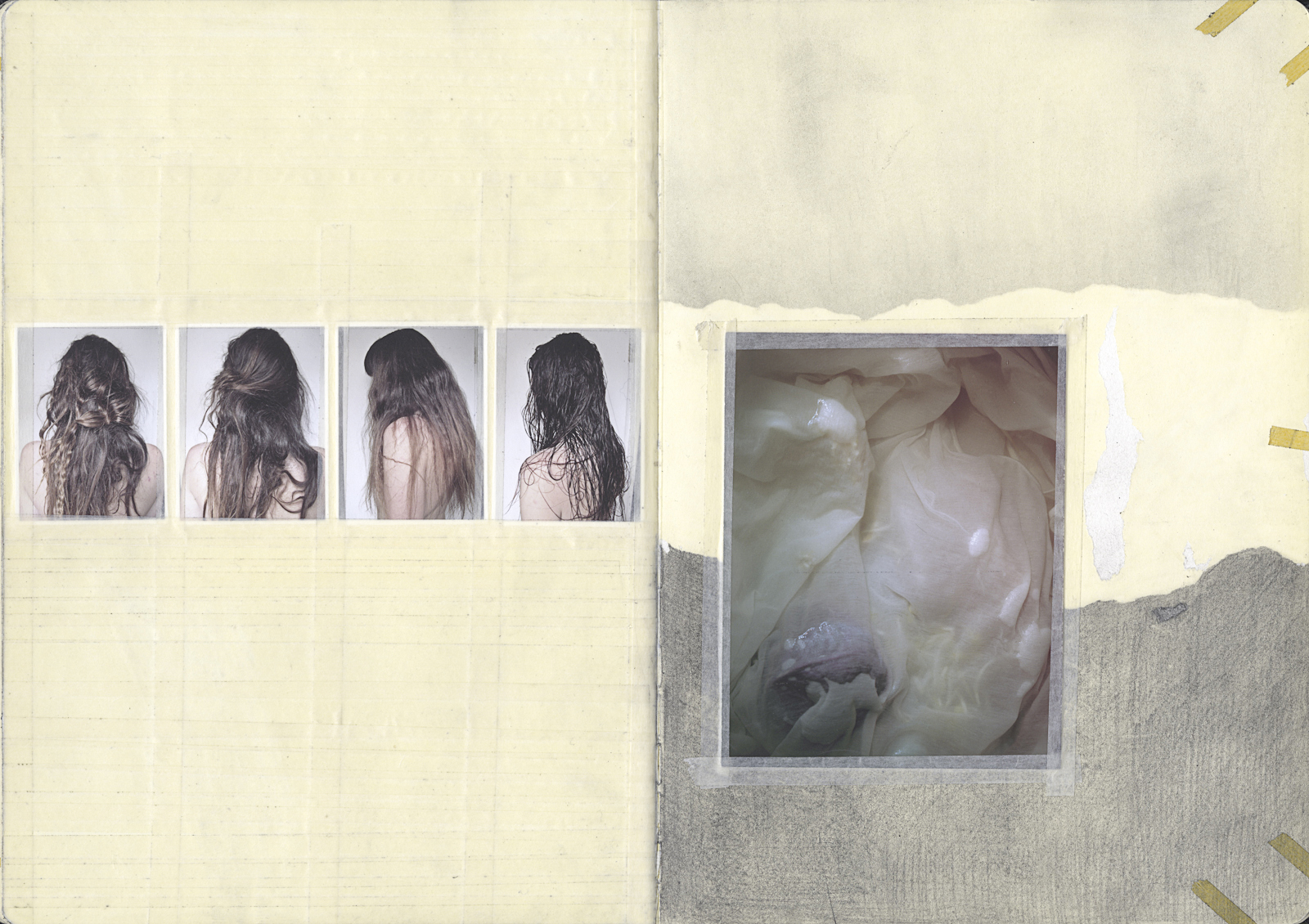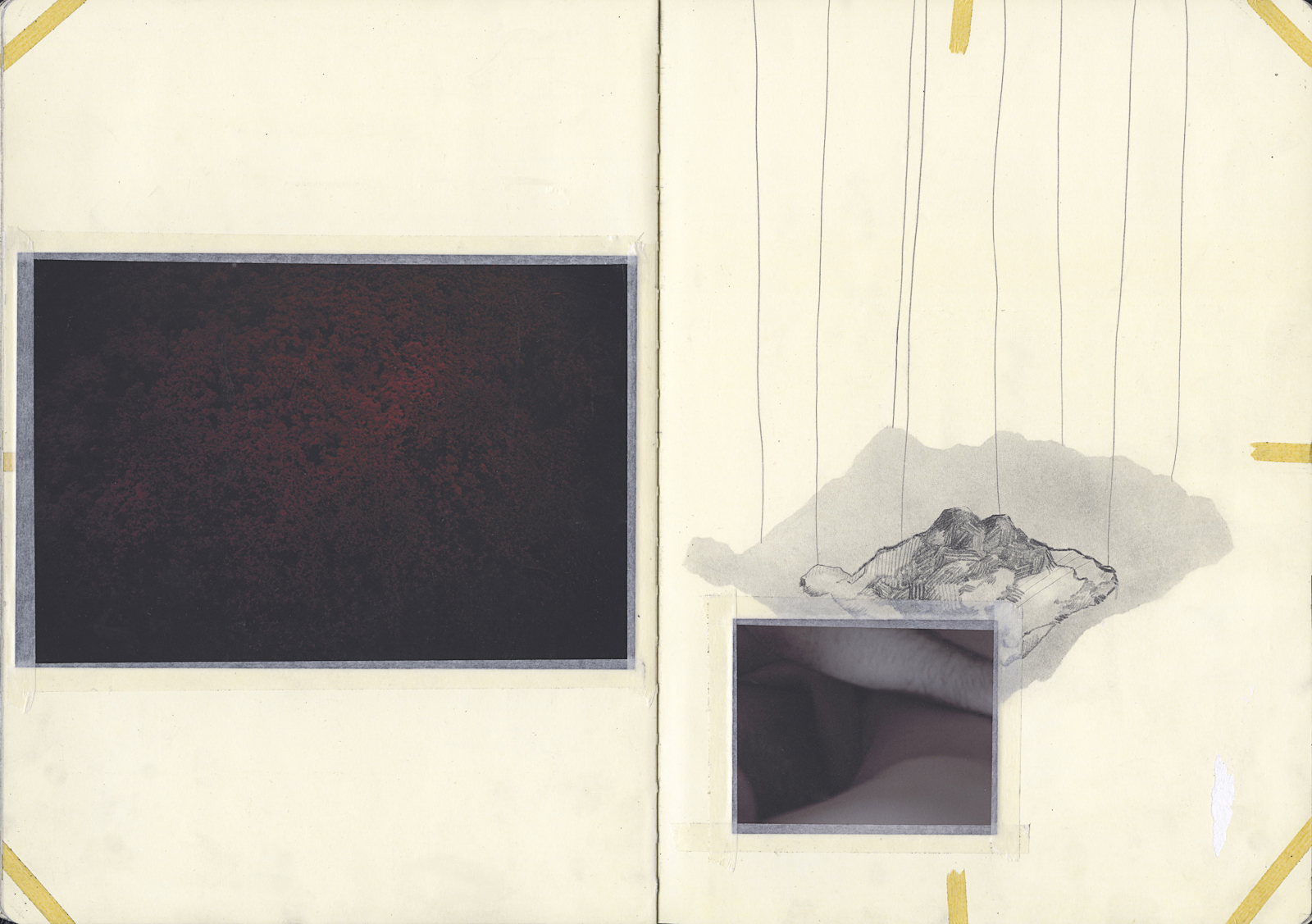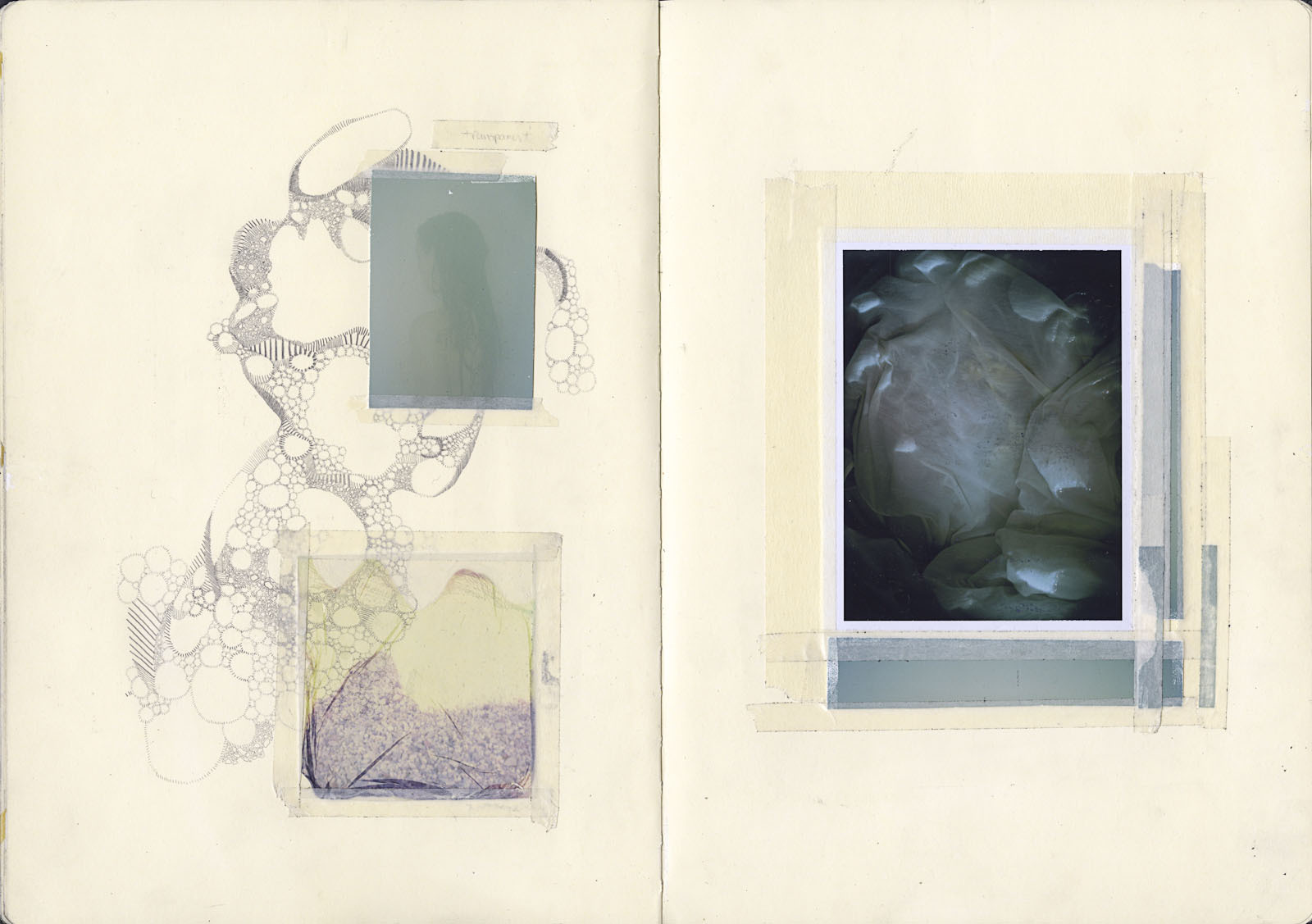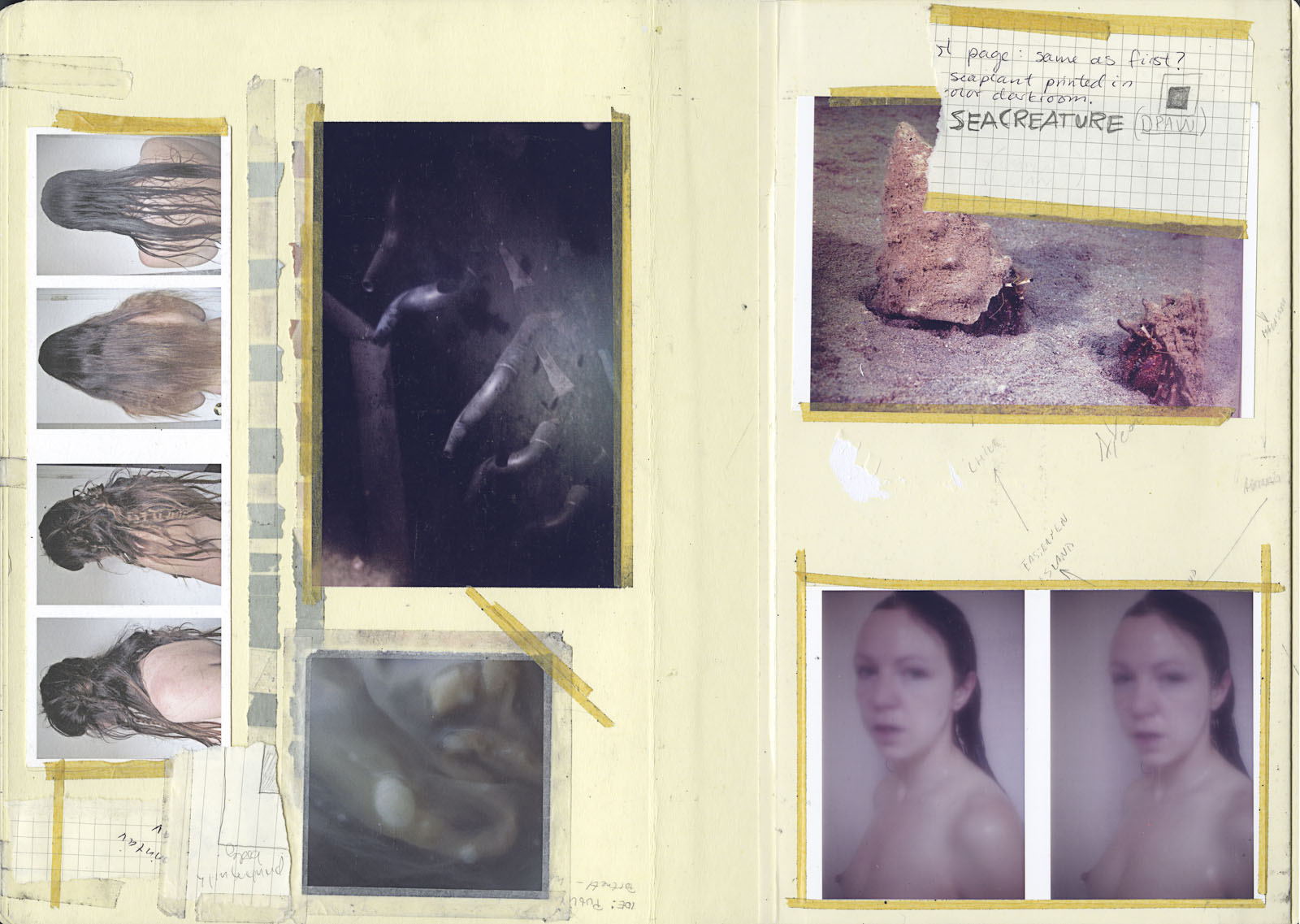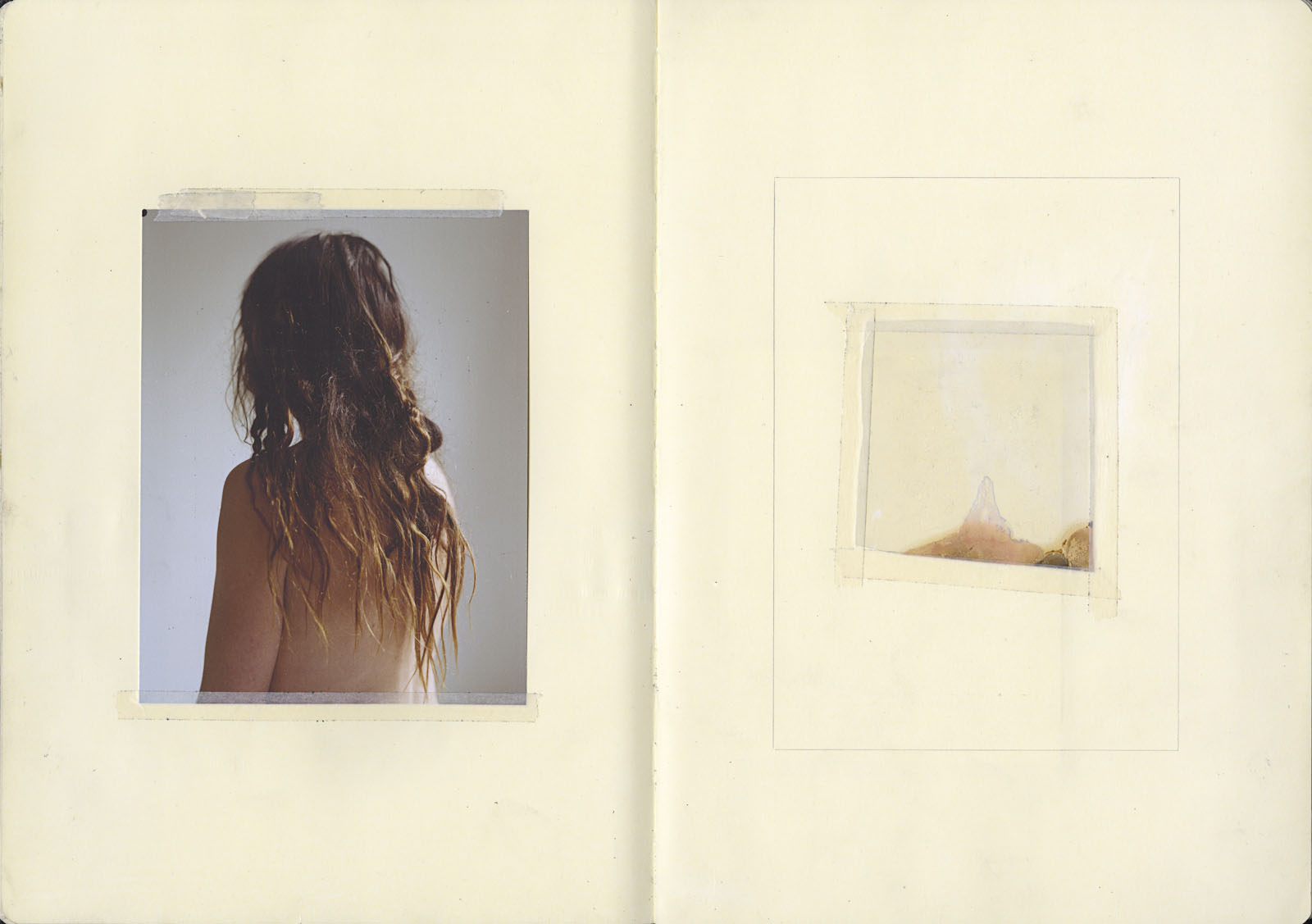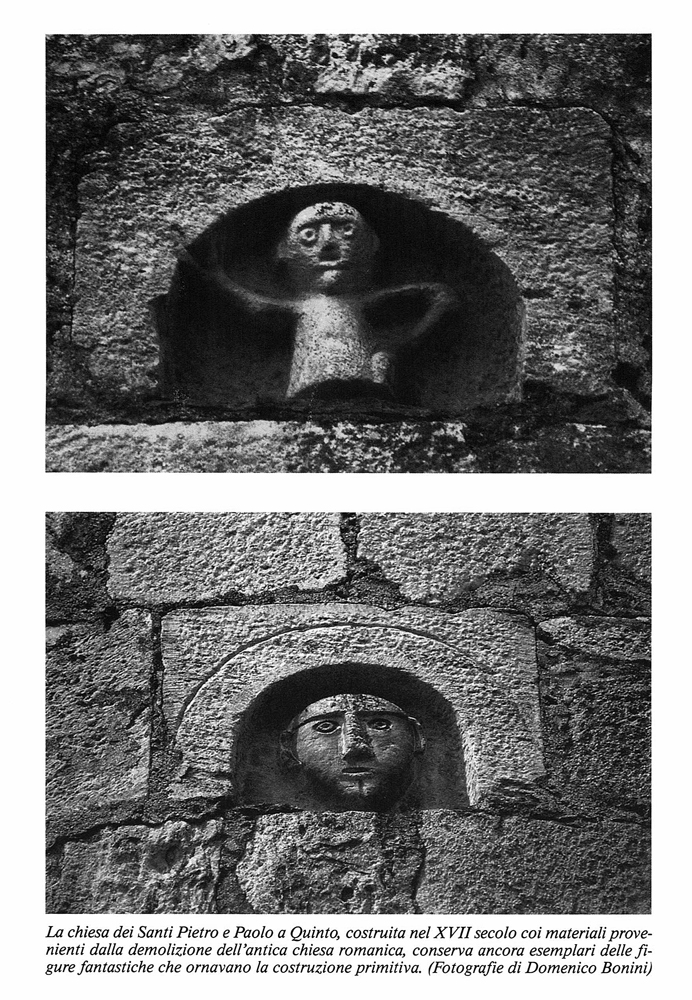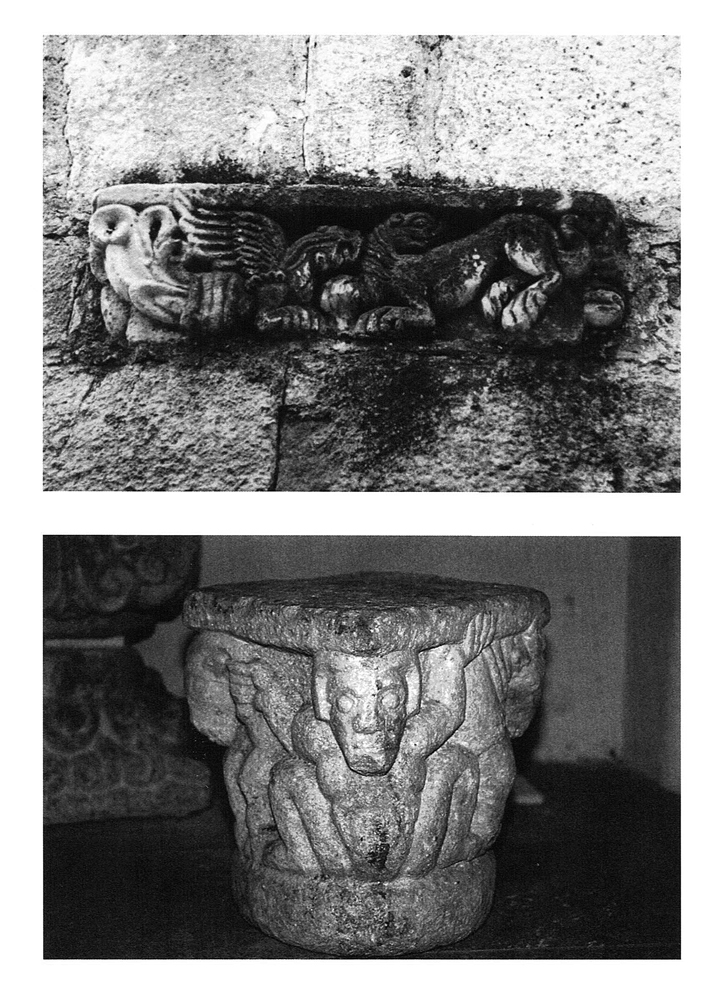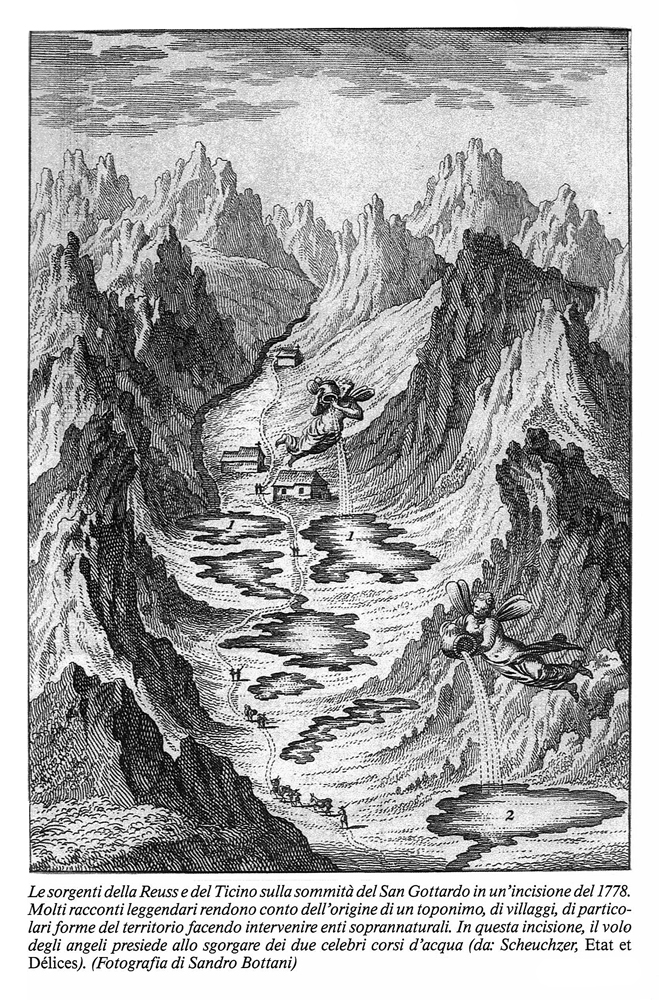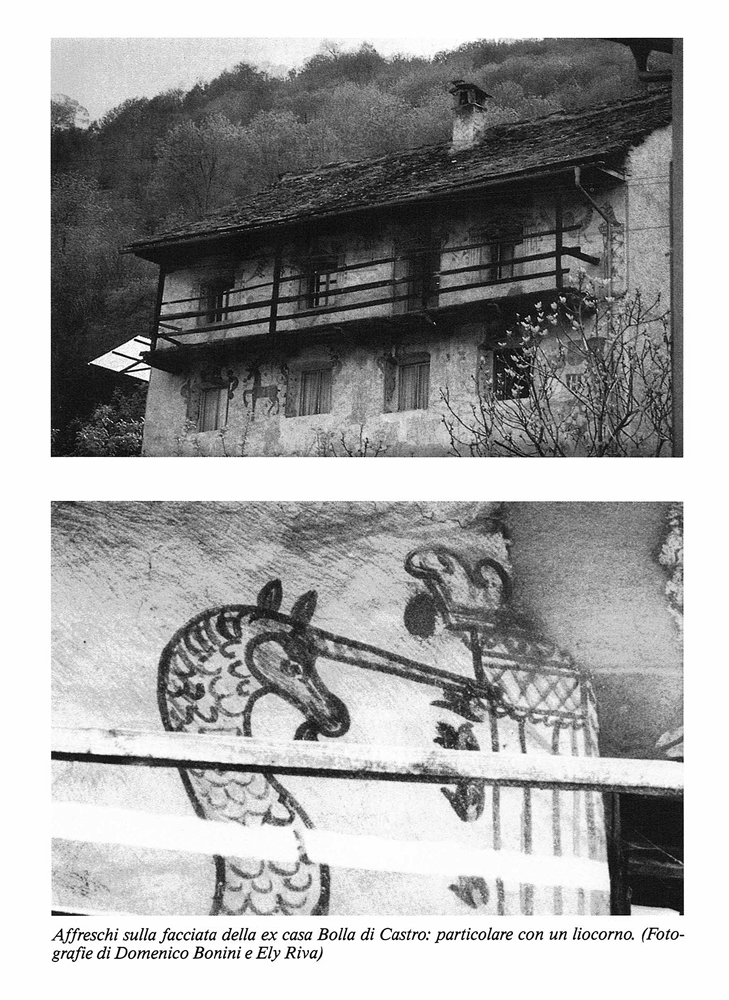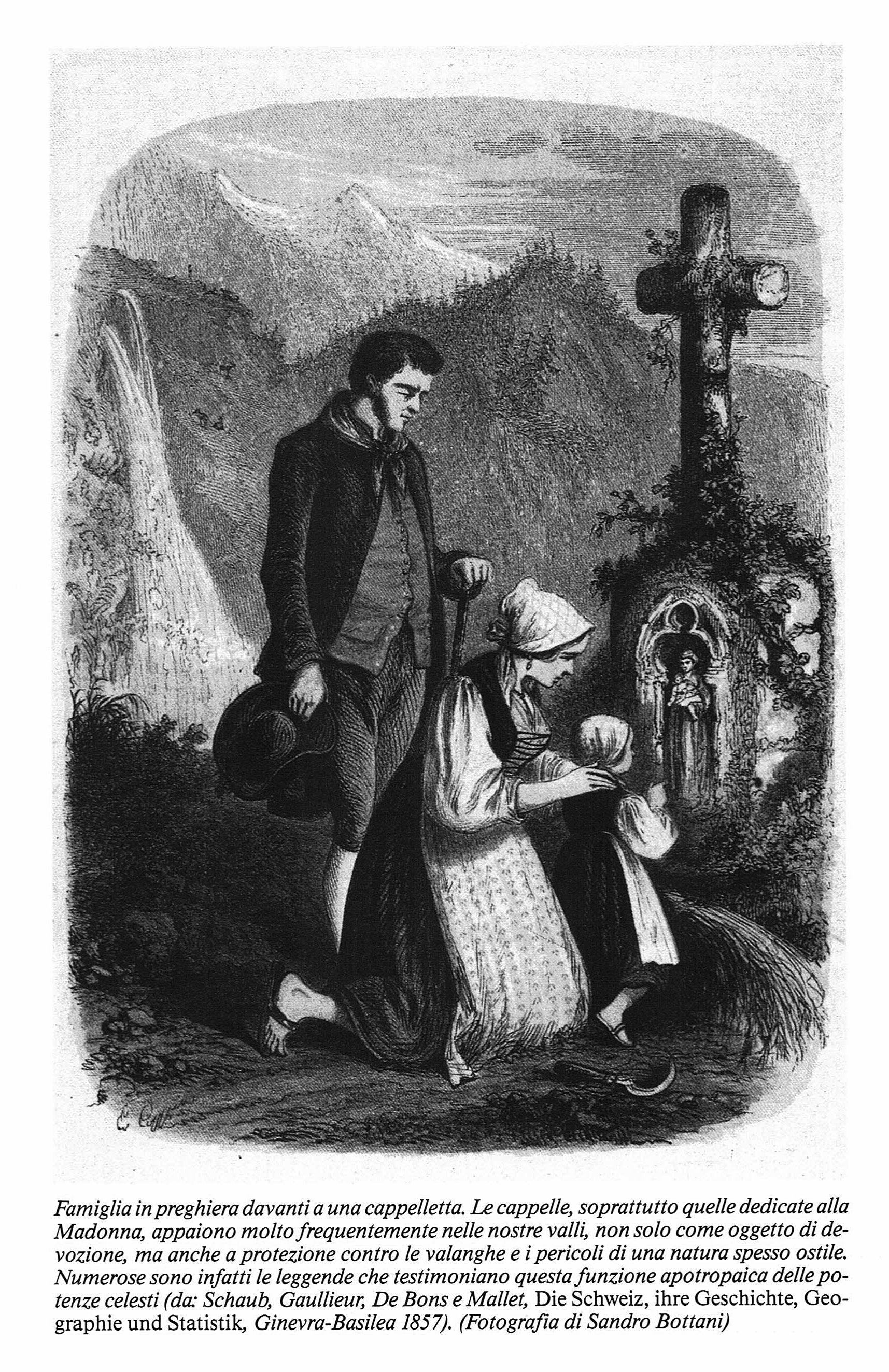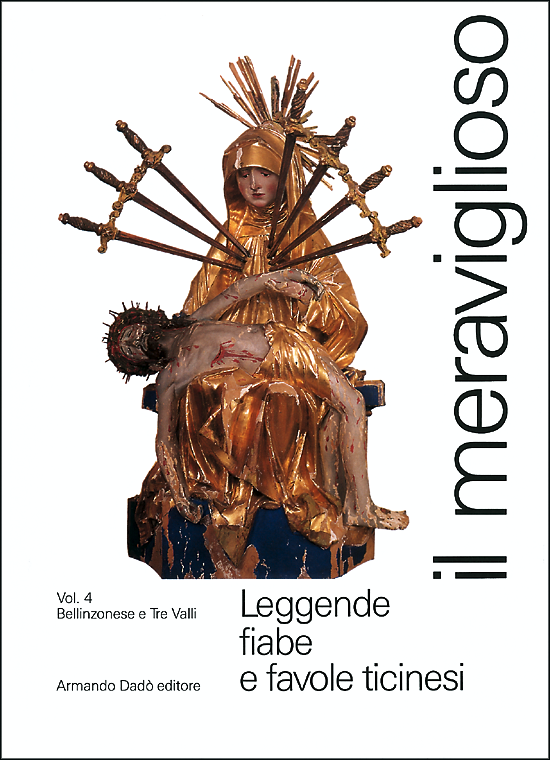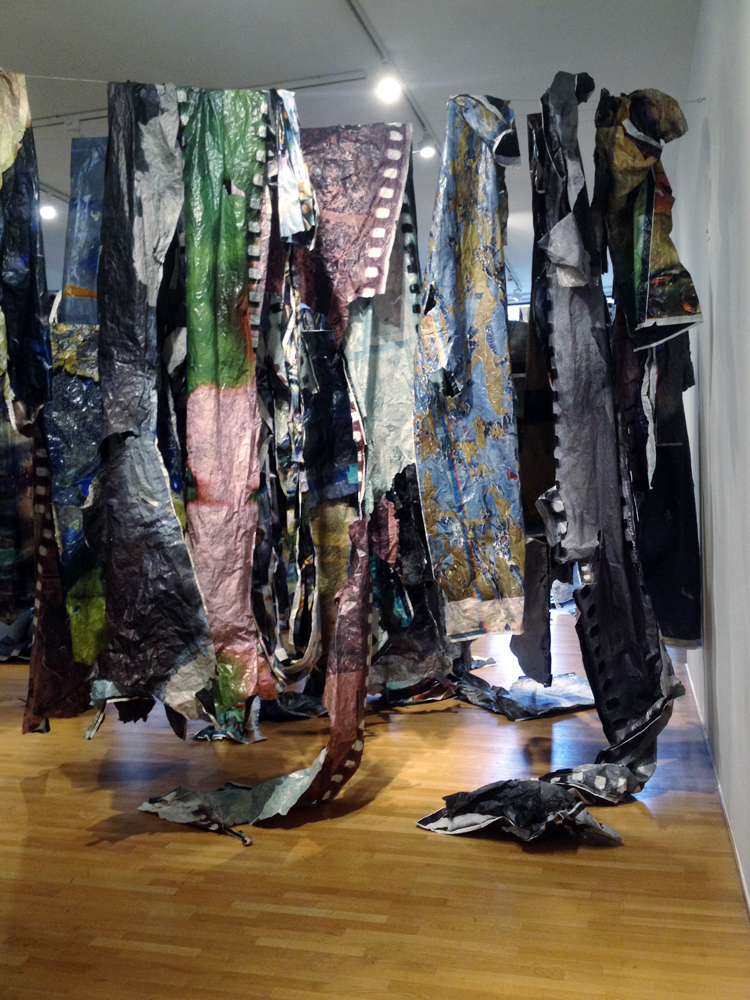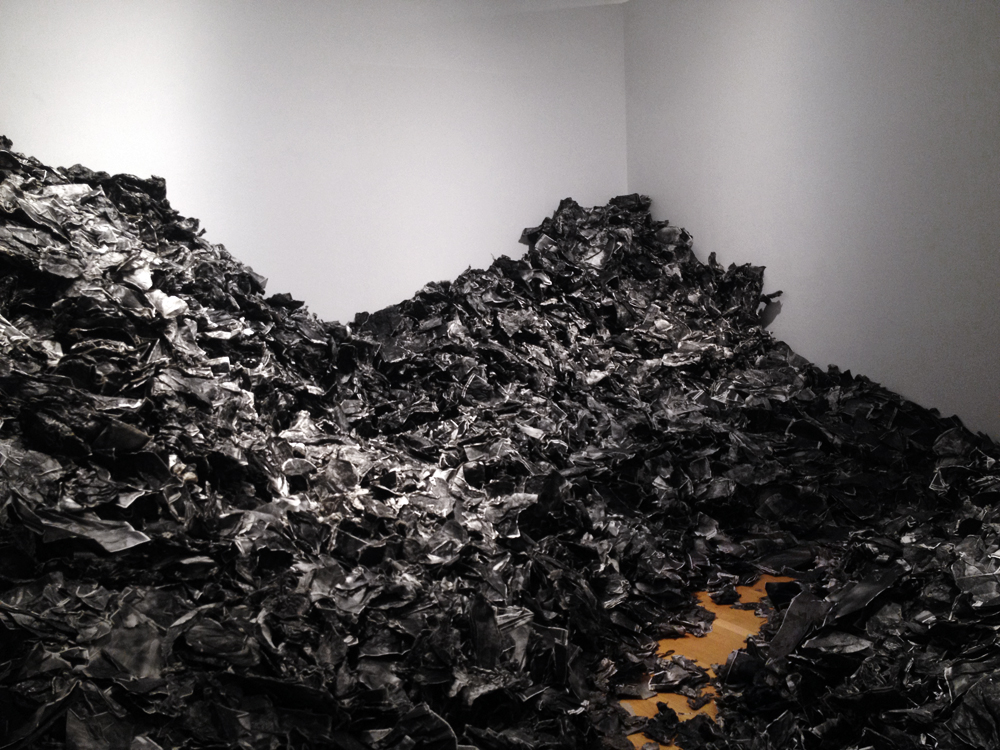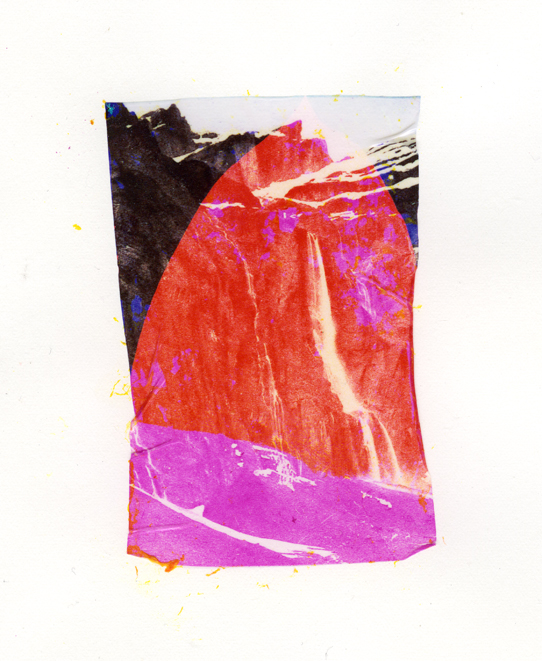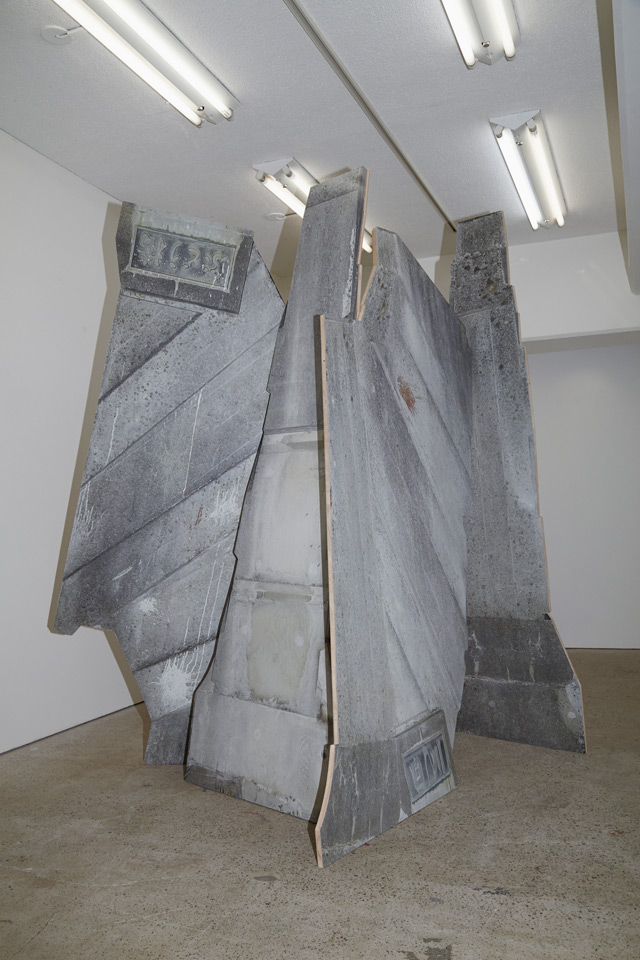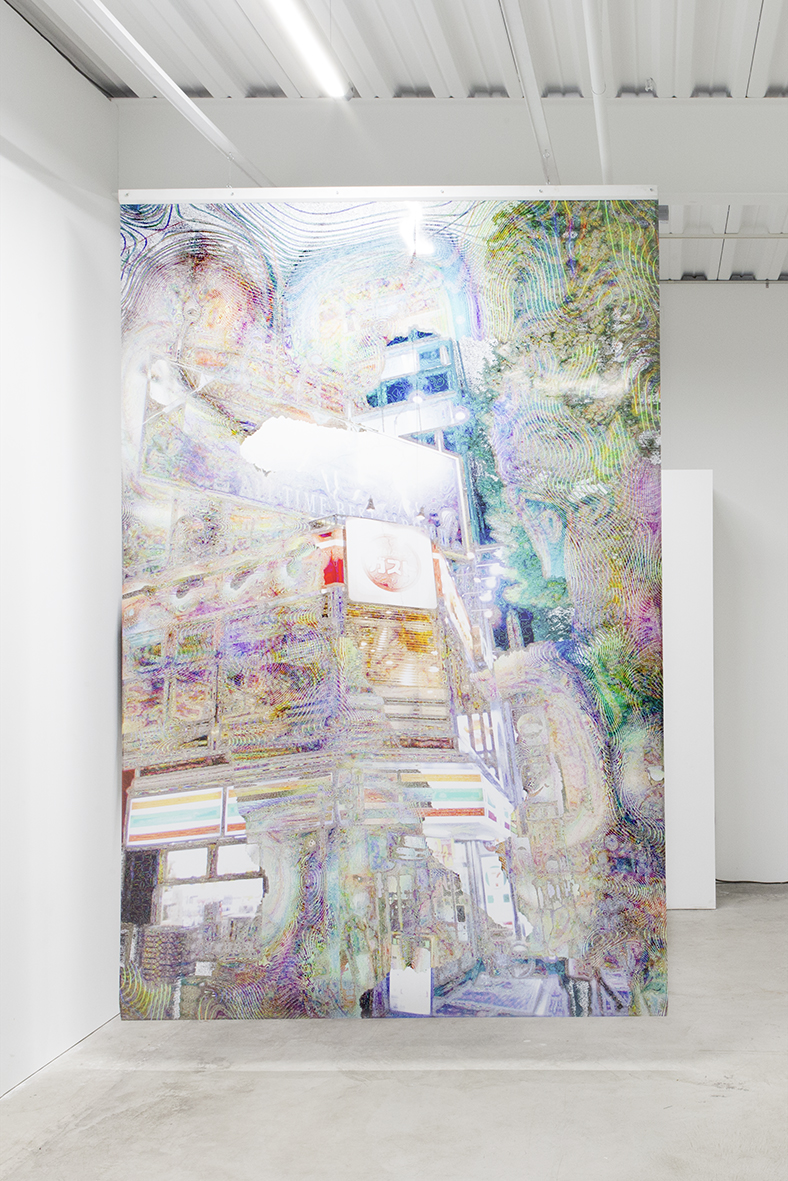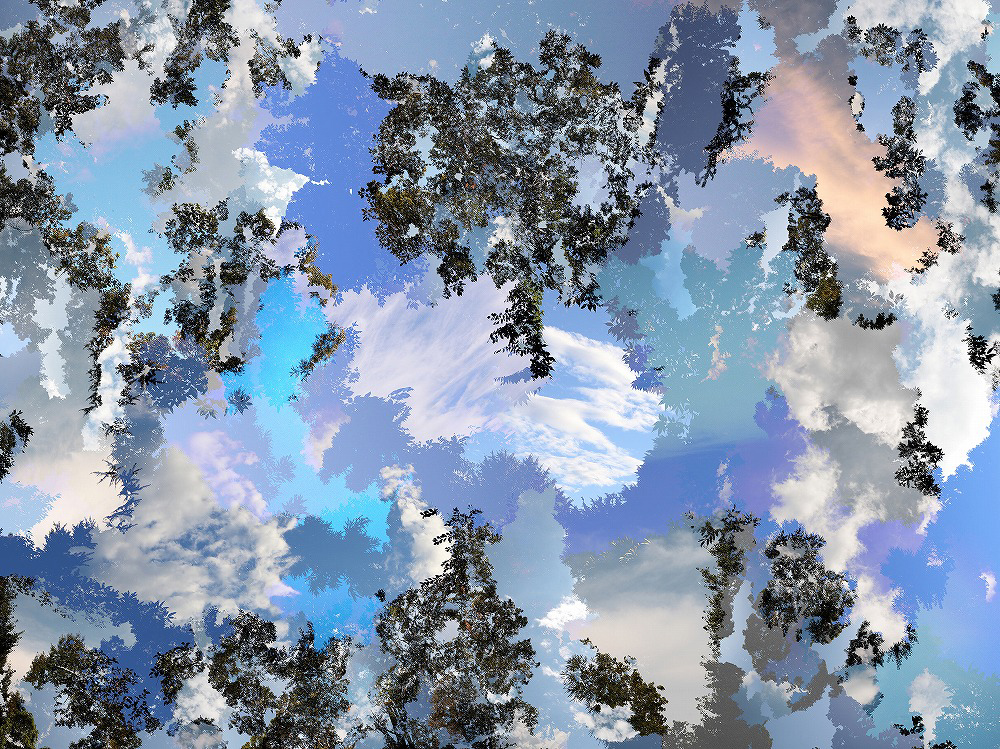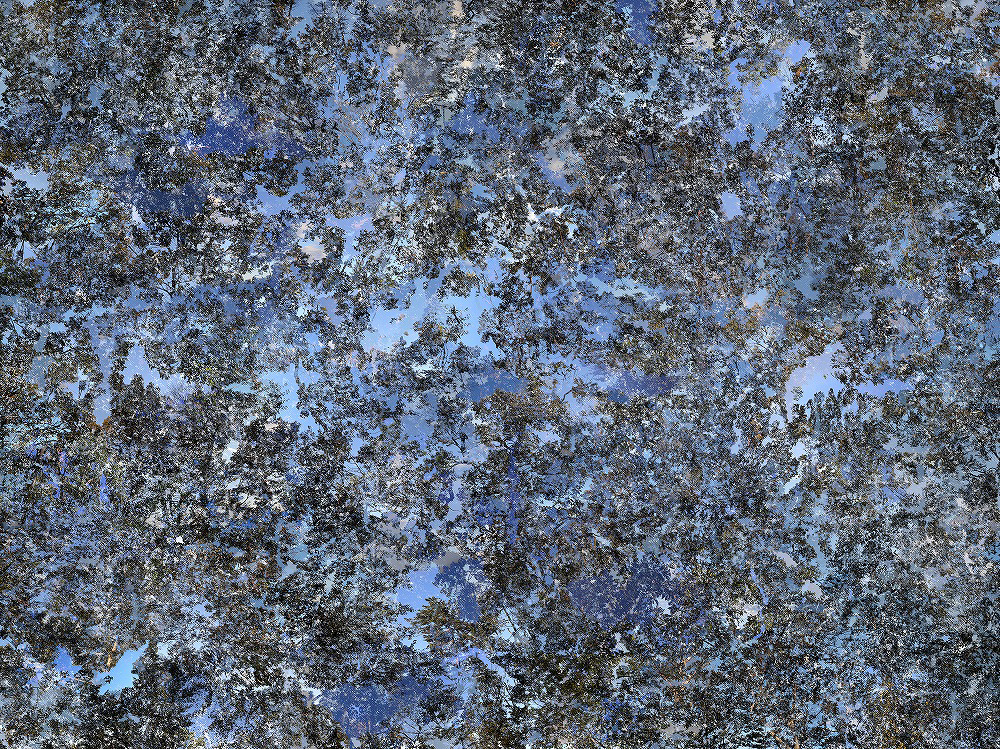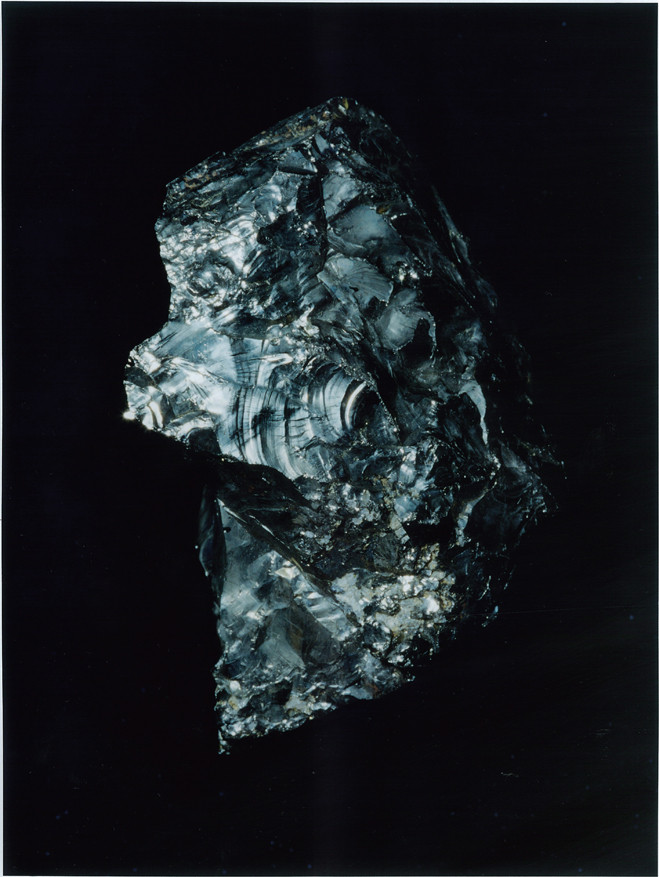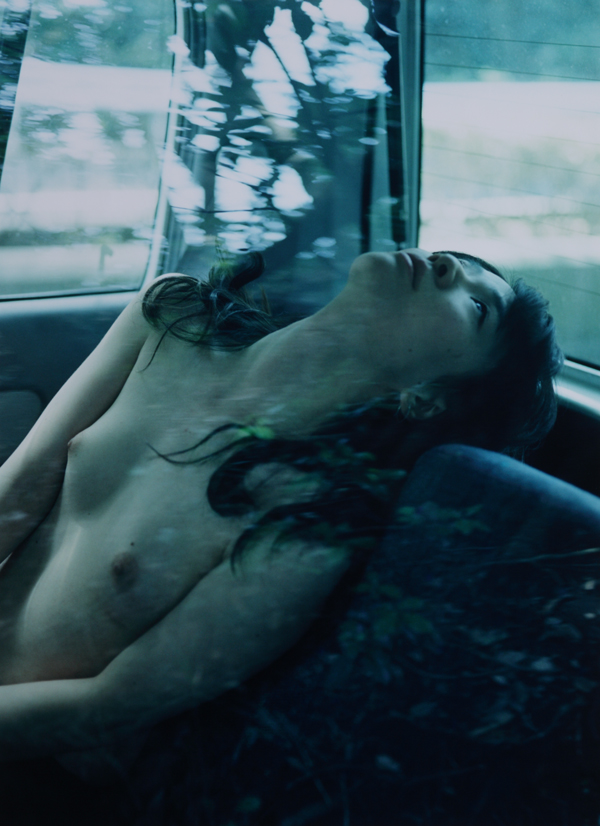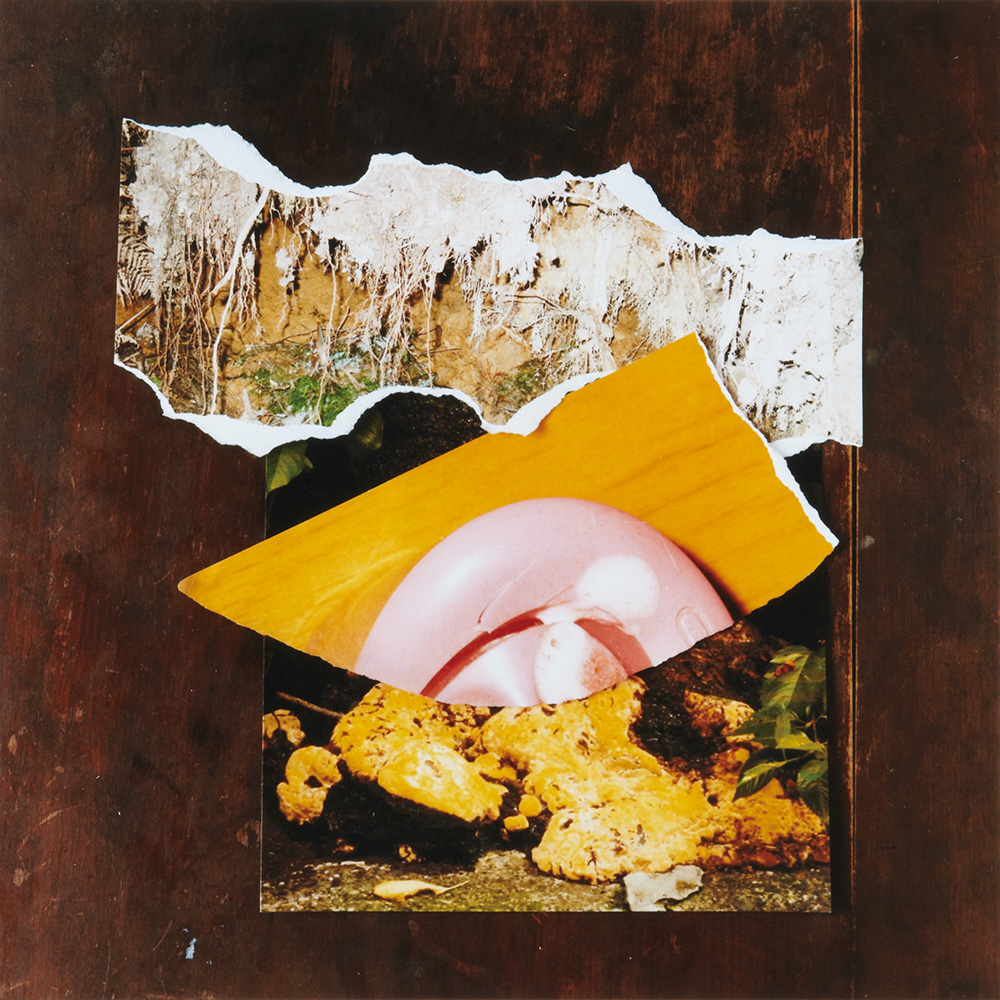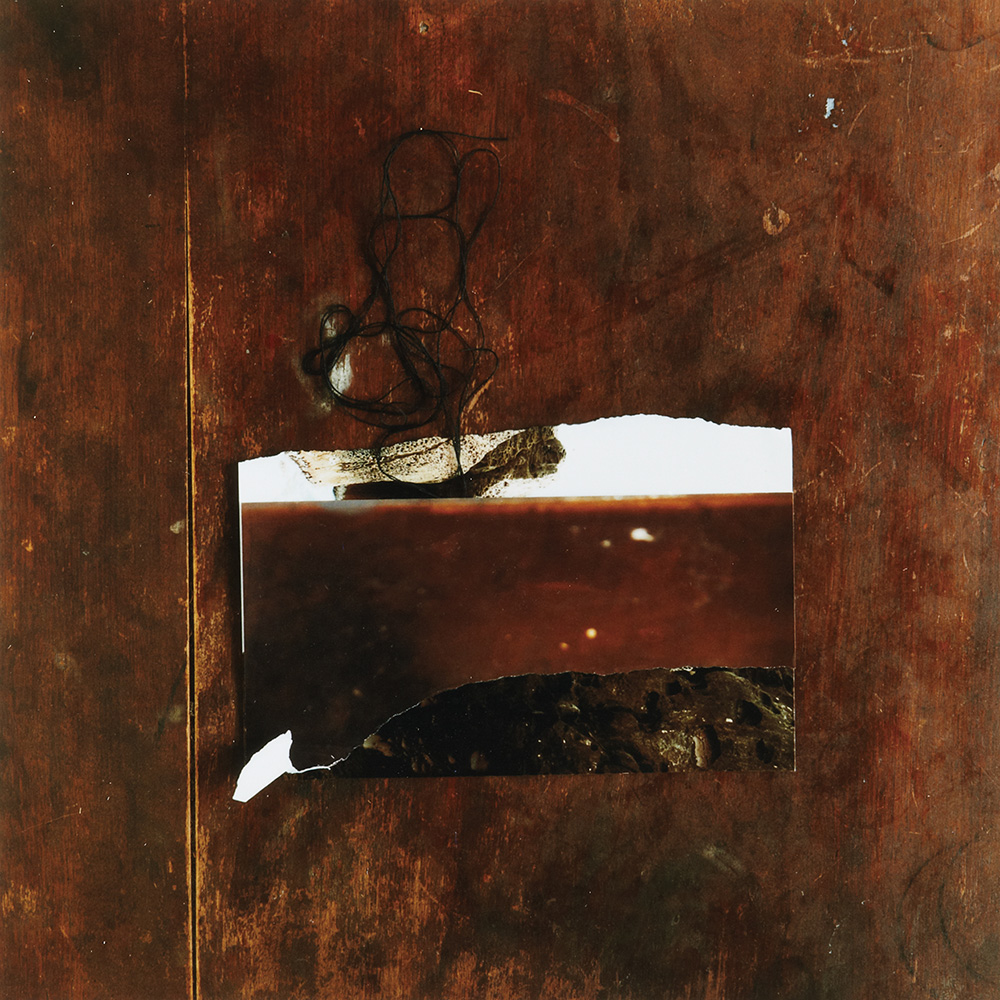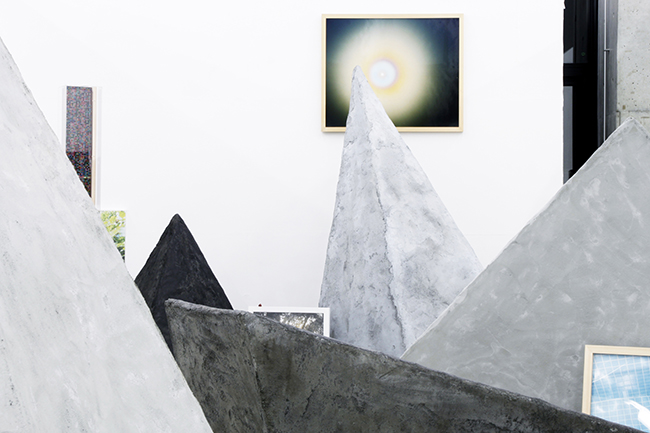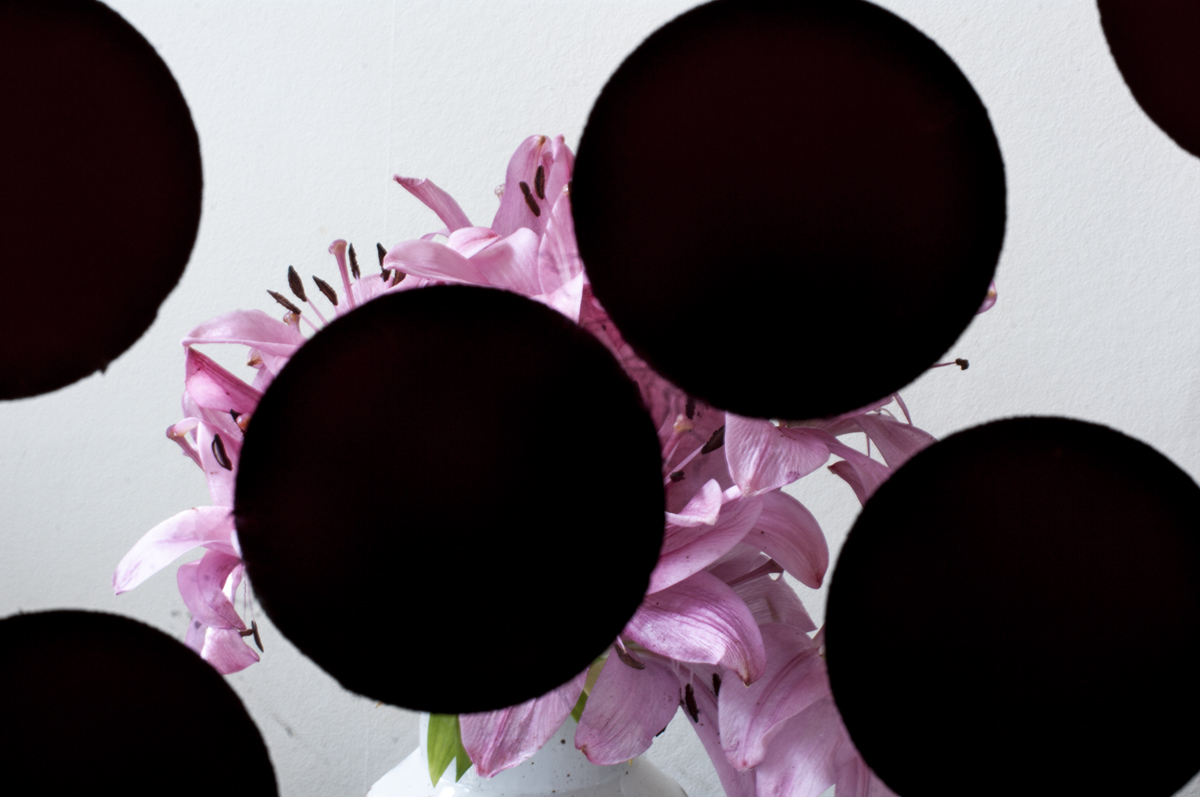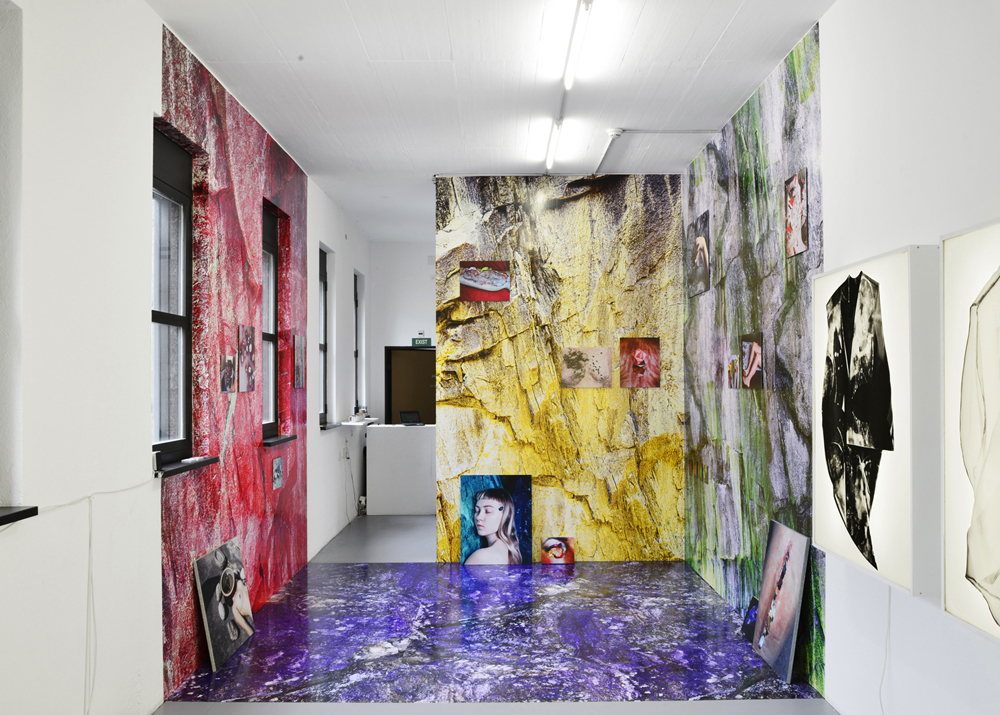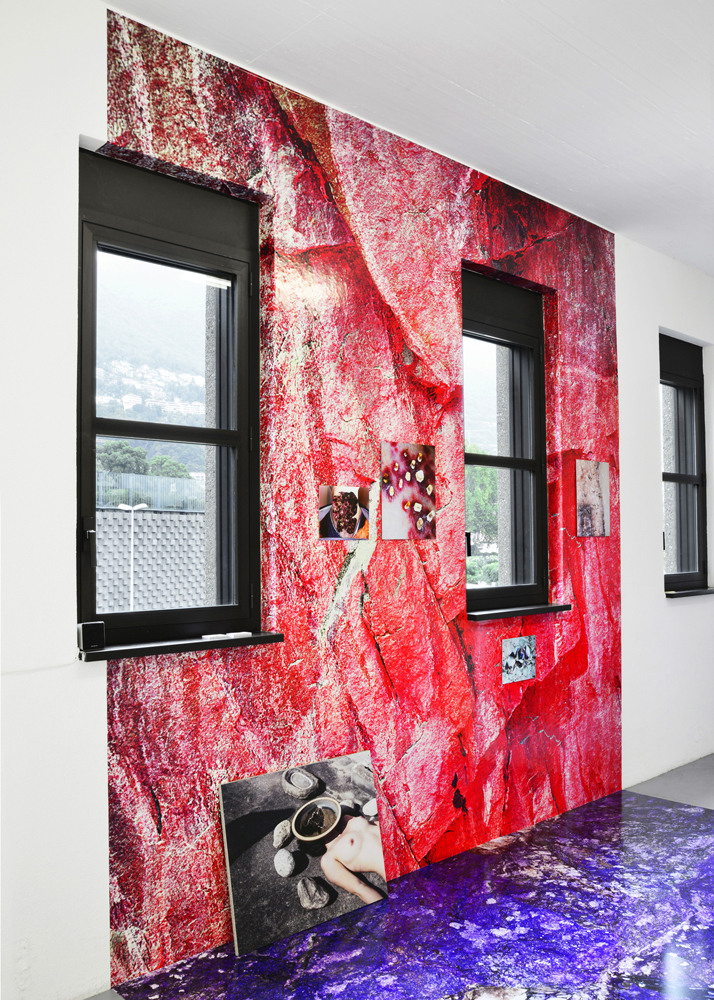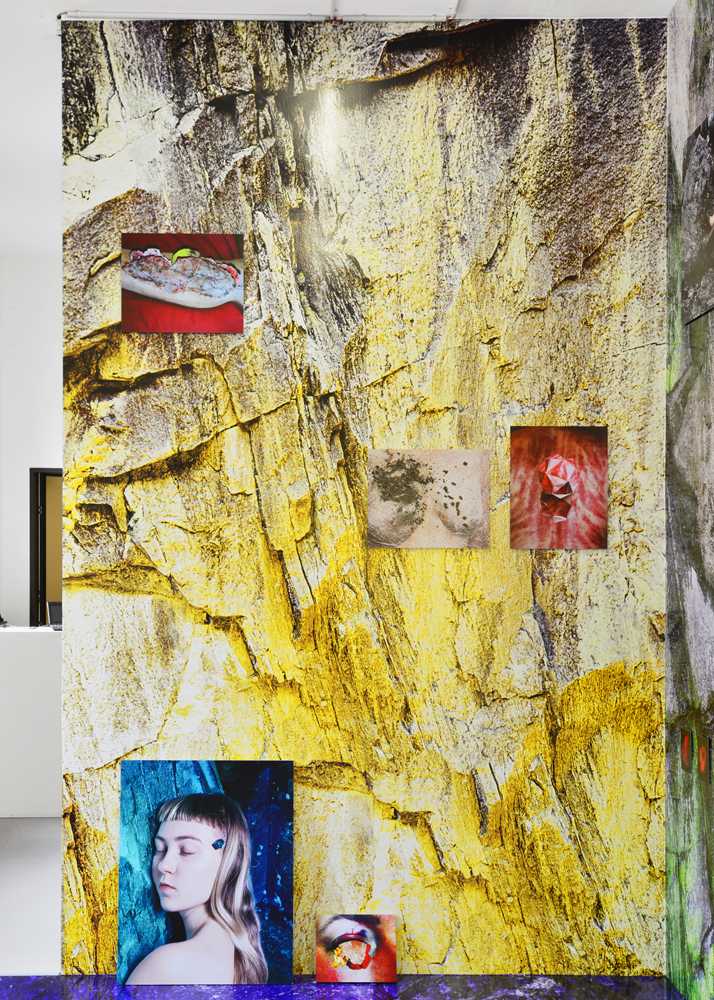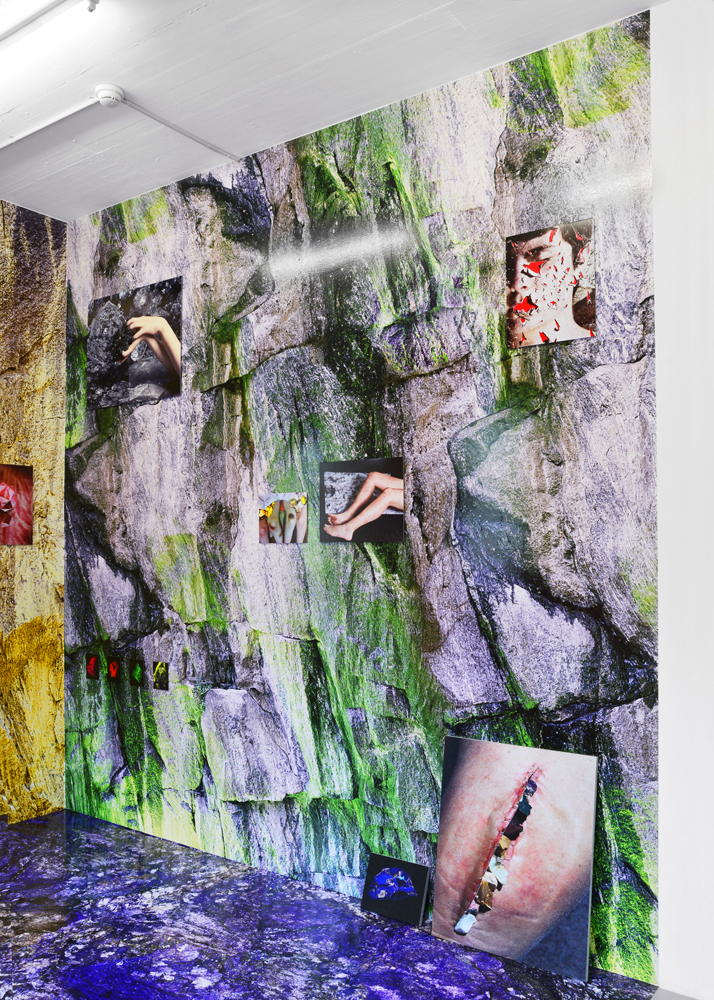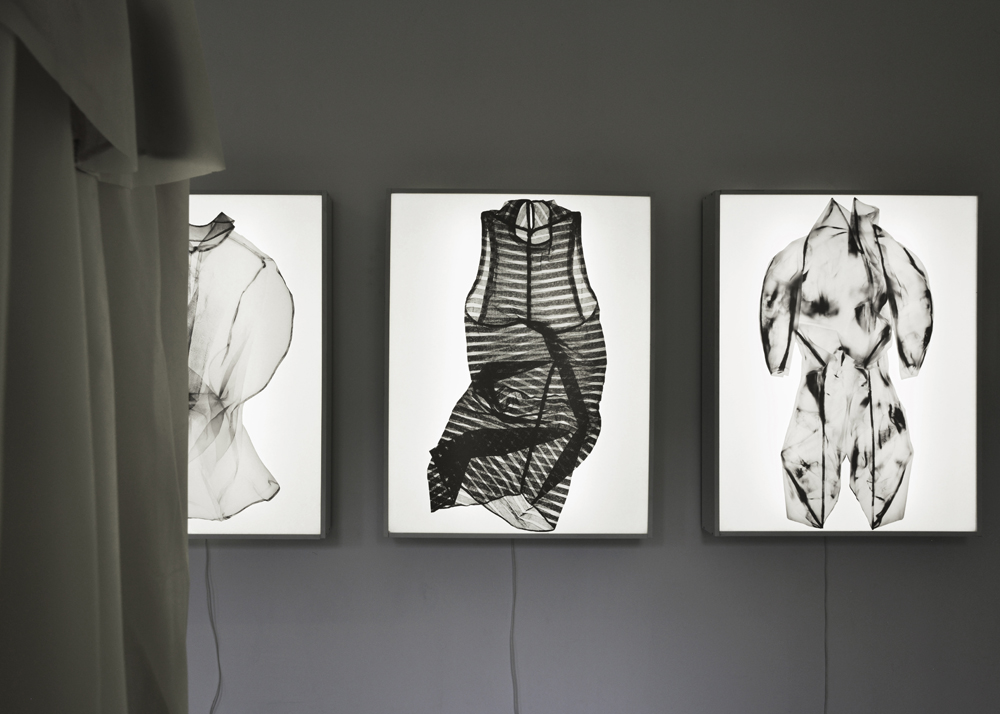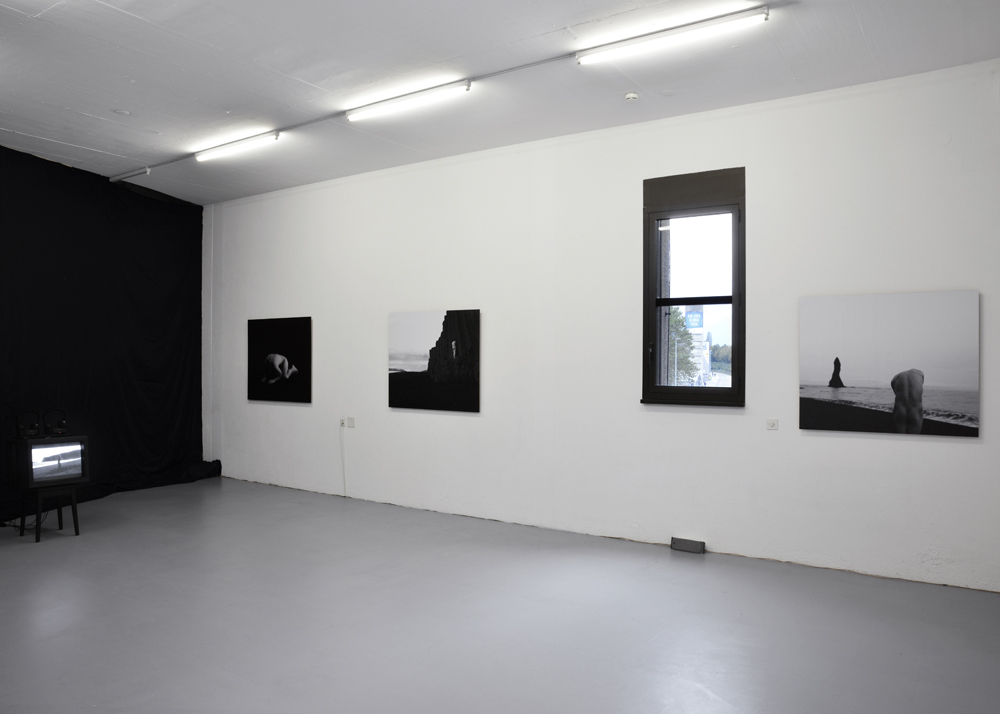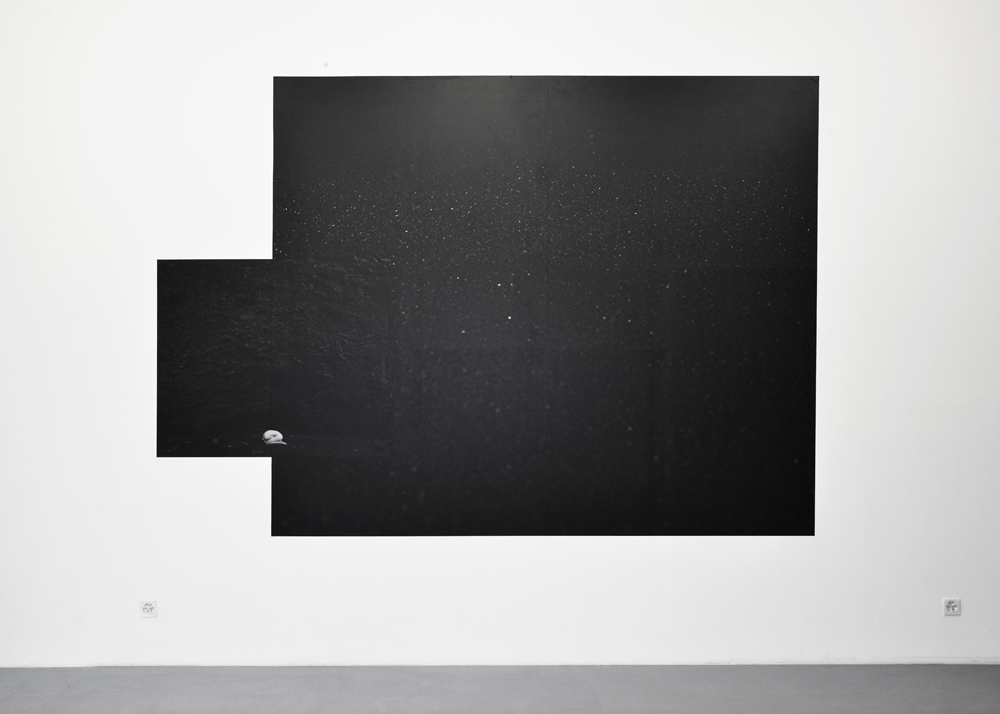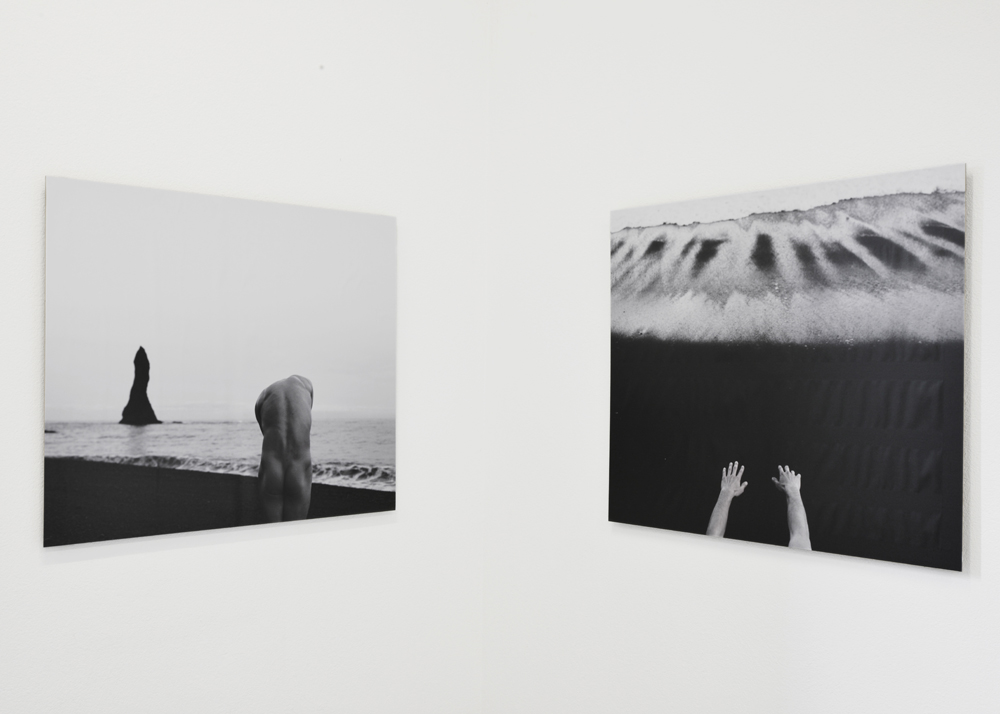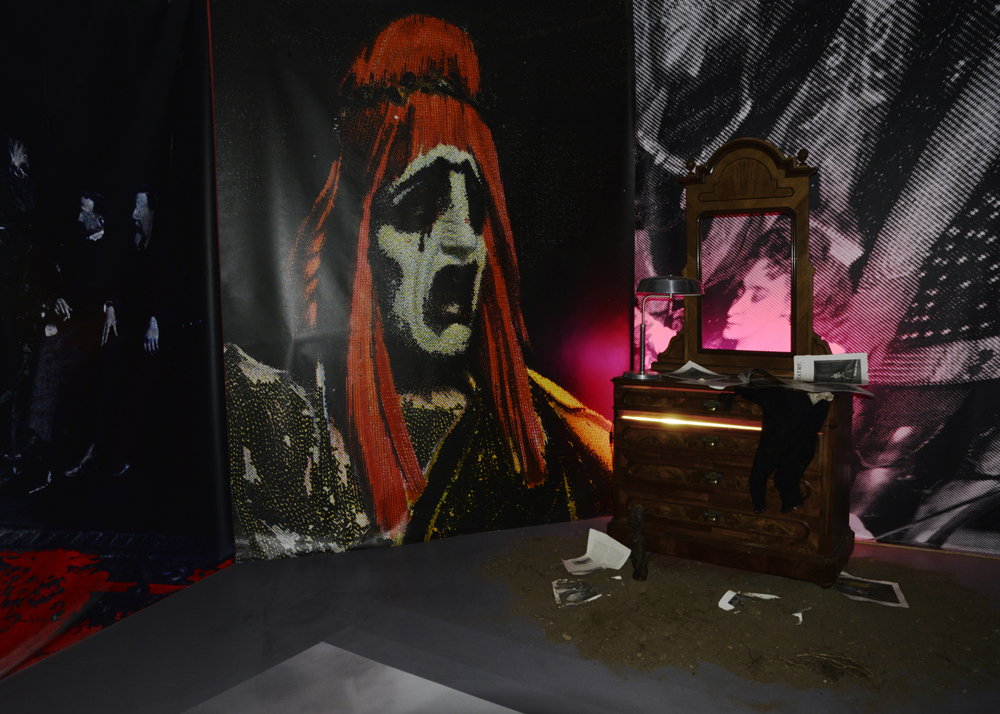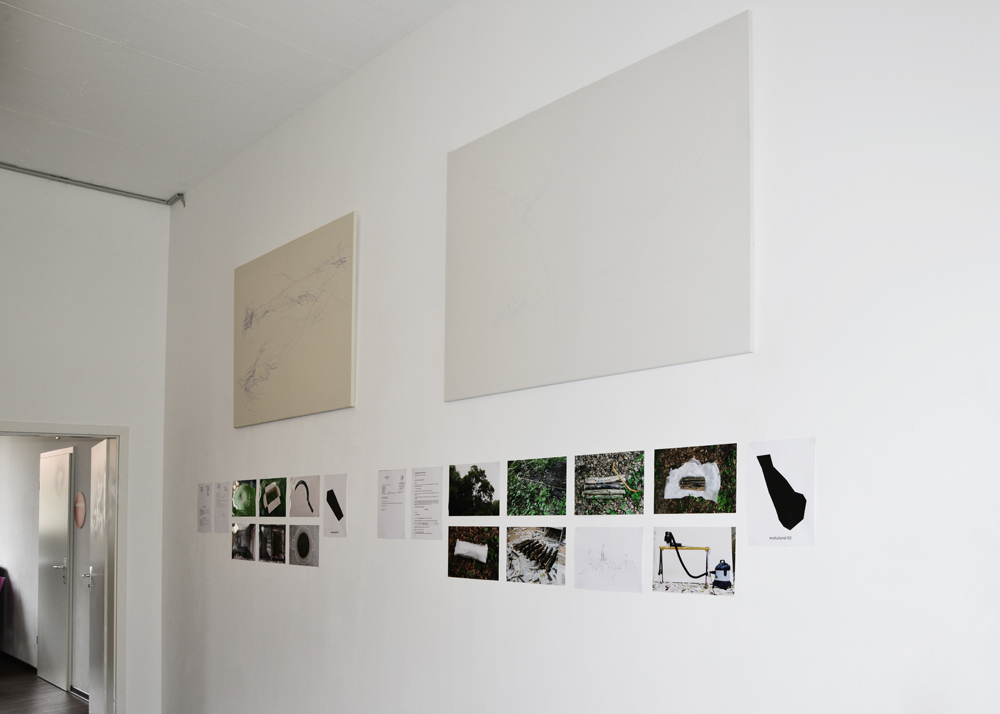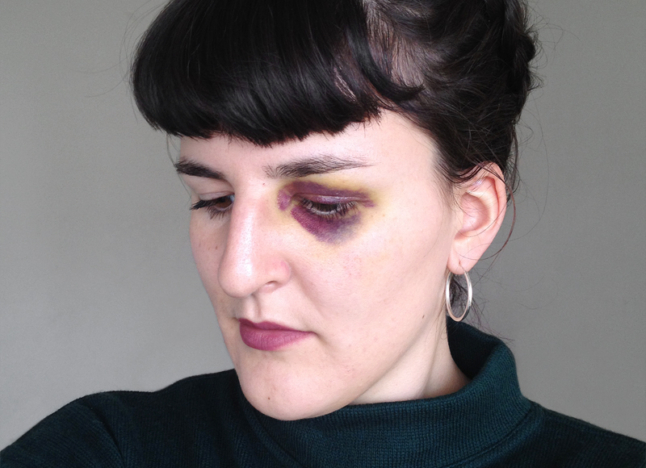Stacy Mehrfar
Artist Feature
Every week an artist is featured whose single image was published by Der Greif. The Feature shows the image in the original context of the series.
Rachele Monti - Longeva sutura erosiva
Mar 23, 2017
In Longeva sutura erosiva I bind human skin and its fragility with the solidity of rocks.
The collages allow me to create a fusion between the mineral element and the human epidermic surface. The rock become anthropomorphic, the skin crystallise. A exchange which becomes fetishism, ending up in bruises and wounds.
The skin shows us the outside of things only through what we can see, in a certain way as photography does. But in my opinion a photographer always tries to show something invisible to the viewers, something that you cannot touch. In this project I am in a constant effort to open the surface and go further and deeper into the physical dimension, trying to express the manifestation of an interiority between organic and spiritual. Materiality, surfaces and colours are fundamental to express this invisible inner being that becomes evident trough the exterior signs.
The installation is a fundamental part of my work, I am in need of creating this space that is my world. The viewers must be overwhelmed by my images that can attract and frighten them at the same time.
Artist Blog
The blog of Der Greif is written entirely by the artists who have been invited to doing an Artist-Feature. Every week, we have a different author.
Published in:
»Der Greif #9«
Meditations on paper
Mar 27, 2017 - Rachele Monti
I recently re-discovered the work of Sara Skorgan Teigen and I can’t help but share it with you. The first time that I saw her project “Fractal states of being” was in 2015 at the Musée de l’Elisée, Lausanne, during the exhibition “Regeneration 3”. I got immediately fascinated by her way of working and using photography. But not only the formal aspect of her work intrigues me, I feel related to her work also in its essence, because it investigate the inner being of the human through the idea of the unseen, an element that is also present in my own works.
The pictures in her book/notebook represents bodies of women and parts of landscapes. On the top and around the pictures, she draws organic elements in which we can distinguish shapes of plants, water, rocks, hairs. She transforms her invisibles emotions and thoughts (that se calls meditations), into something visible through the connection between drawings and pictures. Even if the feelings remain abstract, the idea of putting them into a notebook helped making them more tangible. The abstract is something she finds fascinating because, as she says: “Abstract forms are fascinating because they are not familiar to us and therefore when presented or seen –we have to accept them.” The work is shown in his brutal state thus in a spontaneous and genuine way. Like the feelings in our mind, the place where ideas comes together and relate in unexpected ways.
Sara Skorgan Teigen is a Norwegian photographer and illustrator. She studied photography at the Fatamorgana, The Danish School of Art Photography in Copenhagen and at the Icp, International center of photography in New York.
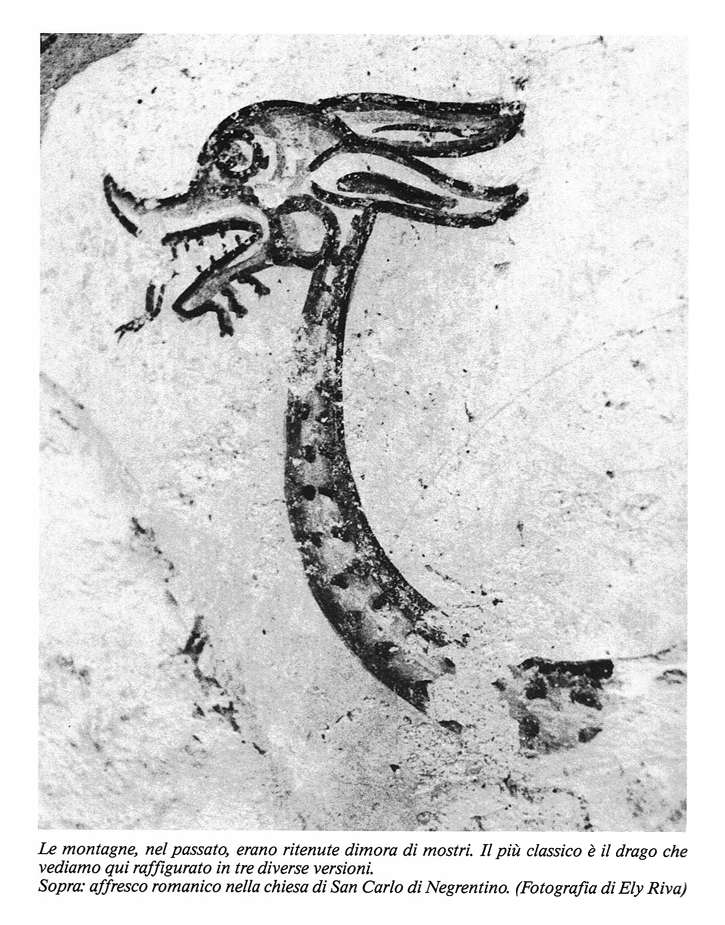
1/9 01 - One of the most common moster, the dragon - fresco from the church of San Carlo di Nigentino

4/9 04 - Il ponte del Diavolo (the Devil's bridge) at the Schöllenene gorge - Scenery of a very famous leggend
The magnificent
Mar 26, 2017 - Rachele Monti
Today, I want to speak about a book that has been a big inspiration to me in the past years, it is called “Il Meraviglioso: leggende, fiabe e favole ticinesi” (The magnificent: legends, fairy tales and fables from Ticino).
In this four volume book edited by Dadò, you can find a collection of myths and legends from Ticino, but also a lot of references and contextualisation to the history and tradition of the region. Ticino is a Italian speaking canton of Switzerland and the place where I grew up. The stories told in the book teach us about imaginary creatures, monsters, dragons, witches, gnomes but especially the devil. The Swiss territory is the fundamental element for the birth and the setting of the myths; in all of them we find a mountainous landscape made of woods, rocks, pastures, streams and lakes. Besides the magical creatures, the human inhabitants of the region are the main characters to appear, however it is frequent to find the presence of “strangers” in the stories. This might be due to the fact that the Ticino region was fundamental for transition and exchanges from north to south. These nordic influences are also recorded in the book through the presence of gnomes and elfs.
As well as the rest of Europe, my region’s culture and religion is deeply rooted in Christianity. It is a known picture to find chapels scattered around the paths, on which people use to wander and pray in order to ward off the devil.
My gaze towards the landscape was shaped by these stories that gave me a mystical and naive desire to discover the invisible in it. That’s certainly the reason why the mountain embossed landscape is my main source of inspiration.
All the pictures above are taken from the book “Il Meraviglioso, leggende, fiabe e favole ticinesi — Vol.4”.
Should we still call them pictures?
Mar 25, 2017 - Rachele Monti
He is probably a already known artist to most of you, but last week I attended the opening of Daisuke Yokota’s solo exhibition at the FOAM in Amsterdam.
In the work “Matter”, exhibited now at the FOAM, Yokota deprive the classical photographic processes and the image itself of all its relevance. He uses as a primary material some of his old picture and focuses his practice on giving a new life to the prints and to the photographic films. Since all the process lay in the destruction of the image, the act of photographing became almost insignificant, and we don’t wonder anymore about what should or had been represented on the original picture. In his installation/performance, he creates a space where the viewer is completely submerged by the “pictures”. Should they still be called pictures now that we can not distinguish them anymore?
While visiting the exhibition the spectator feels in an outer space, a parallel world, created with anonymous image. A metaphor of the flood of images that we are already used to see every day and, because of this information overload, they loose of significance and we can easily forget them. While using and re-using old pictures, by destroying the deconstructed images, he also moves a critics to the art system: Why should we limit the reproduction of our pictures if the medium we use is made to be reproduced over and over again? What are the values of an image and where do the values come from ? His work is the embodiment of how I believe contemporary photography should be today: Something that, in the chase of new possibilities, fight and argue the medium itself.
Speaking about him made me remember of last Autumn when I was visiting the Unseen Photo Fair in Amsterdam. There, I discovered numerous others Japanese artists that, I have to be fair, I never had the curiosity to investigate before that moment. I was amazed by their works, especially by the organic feel of their images and by the feelings that they communicate to me. I let you discover, here below, a selection of stimulating pictures made by Japanese artists:
This is my cave and I feel great in it!
Mar 24, 2017 - Rachele Monti
My project “Longeva sutura erosiva” can’t be considered complete if I don’t show you the way I prefer and I would always want to share it. I believe that there are different ways of expression apart from the two-dimensional idea of classical photography and installation is one of those. I had the chance to show my project in several exhibitions, being able to focus on the installation allowed me to understand how to use the space as an integral part of my work. I found the chance to create a tangible space that goes beyond what is represented on the photographs and allows the audience to interact with it. This new space is a cave full of bright colours and overwhelming patterns that put the spectator in a place where he is obligated to feel part of the artwork. I want to trigger the viewer with the the hidden emotions I am trying to show. The notion of space is something that I want to further explore and that certainly will have a significant importance in my future projects.
The pictures above are showing the installation I did for the collective exhibition “Sê plural como o universo!” hosted by La Rada, Locarno, Switzerland. In the following quote, the explanation about the concept of the exhibition by the curator Carolina Sanchez:
“Man and nature: two realities linked since forever; one inside the other, interdependent. This universe manifests itself in vanishing phenomenons, which appear and disappear within seconds, leaving it up to interpretation and your own perception: by feelings, dreams, fears and visions.
Sê plural como o universo!, a collective exhibition, is tied to the Fernando Pessoa’s famous aphorism, which strongly defines the Portuguese poets’ ideal – the heteronomy of characters, styles and inspirations – la rada’s spaces will open up to different mediums: photography, collages, fashion, music and installations. The artistic responses will create an heterogeneous ensemble: different synergies will communicate through sensorial experiences, nodding at each other in brief similar nuances. A sound will surround and create the mysticism of the exhibition: a journey dictated by the chromatic contrast, between light and darkness, density and asepsis. Intriguing, showing new research and developments that relate to the universe, thus creating a sensory journey through the eyes of these artists.”


